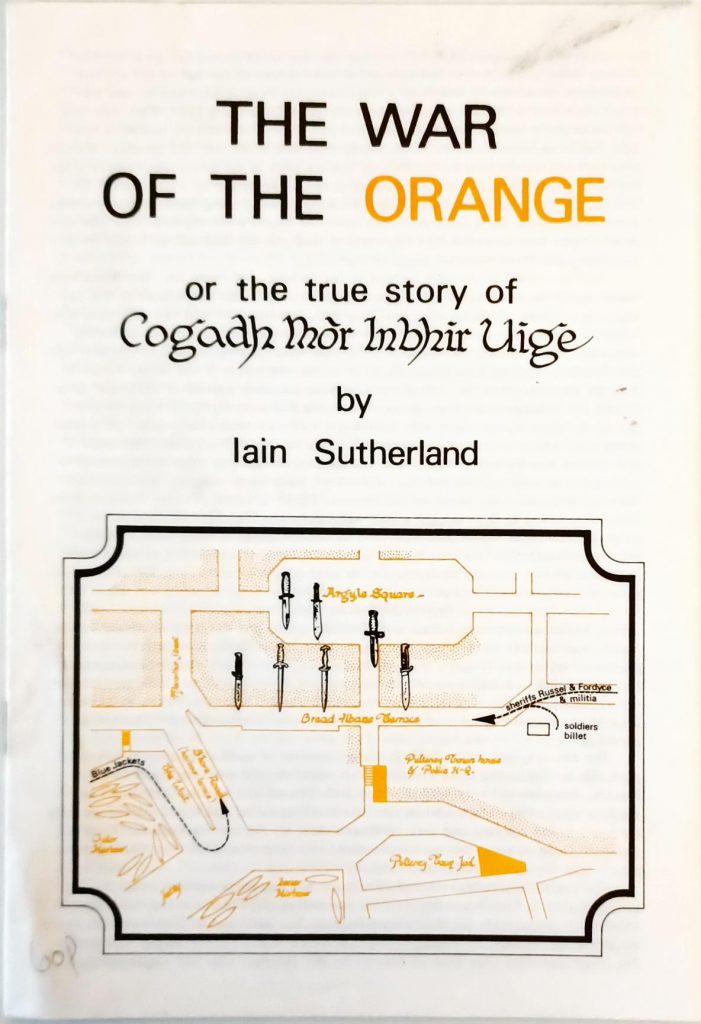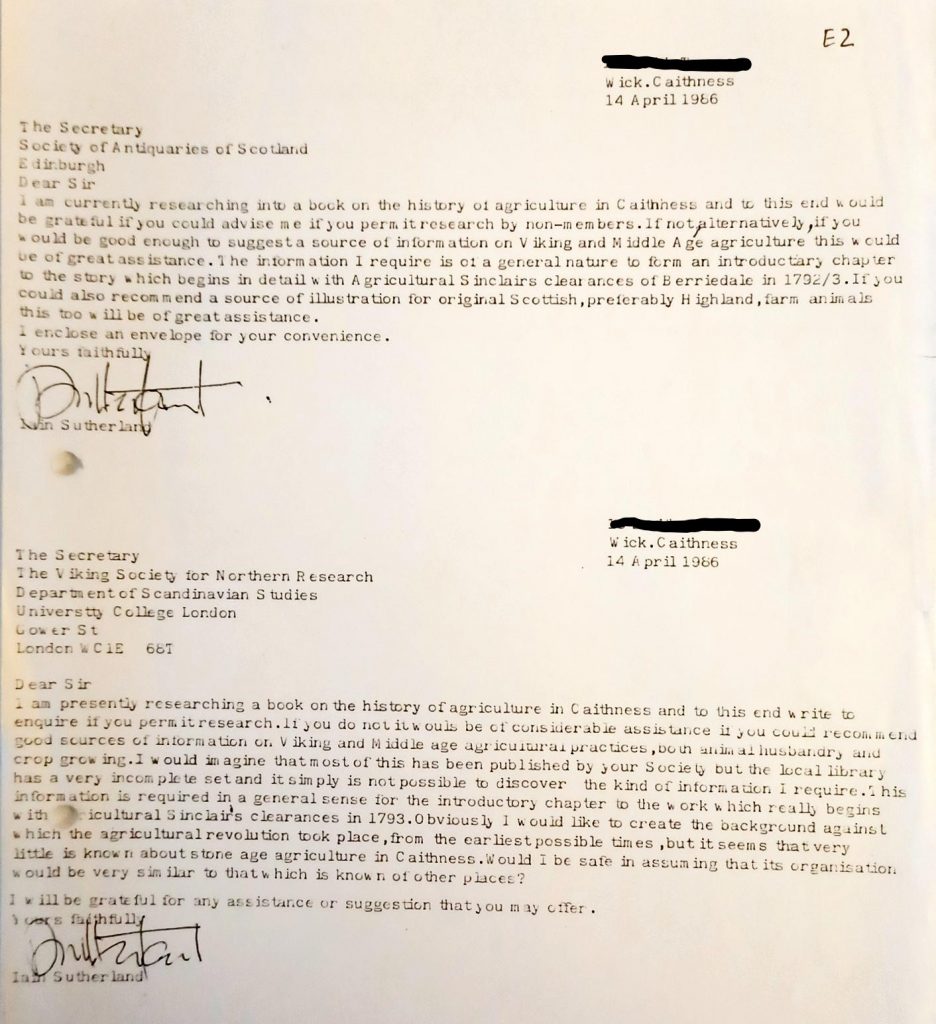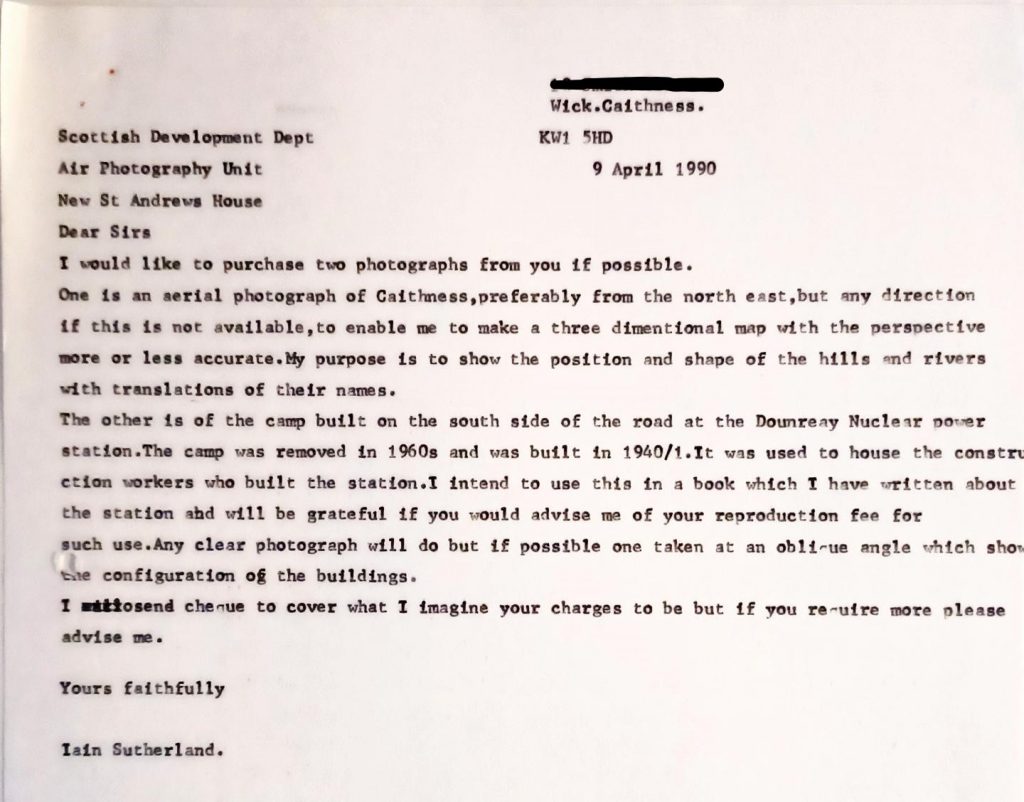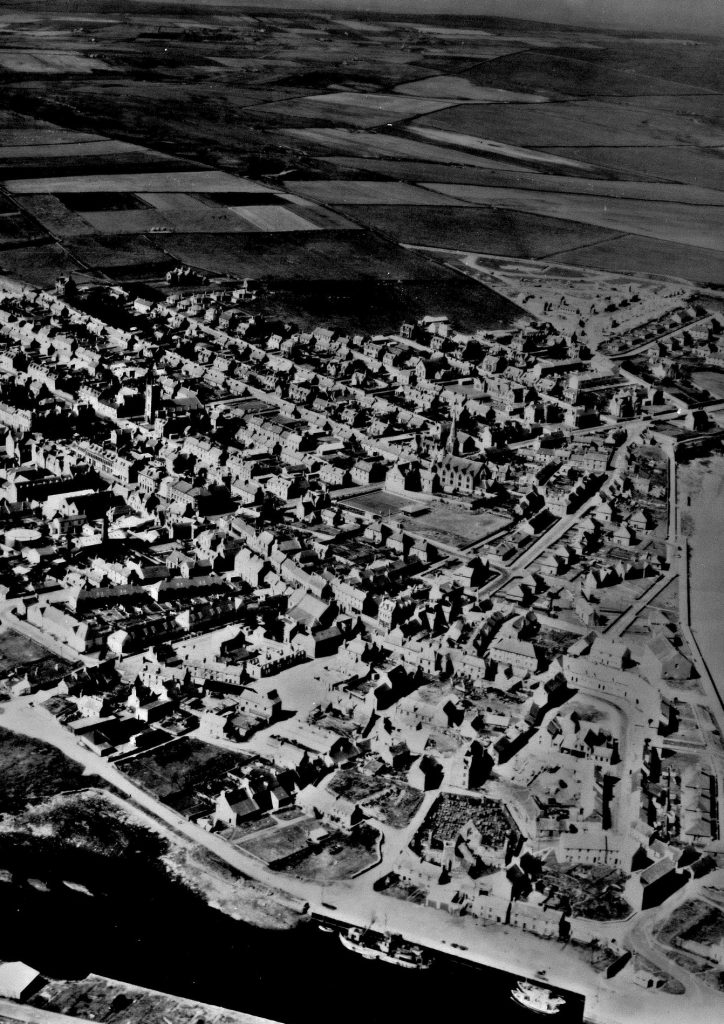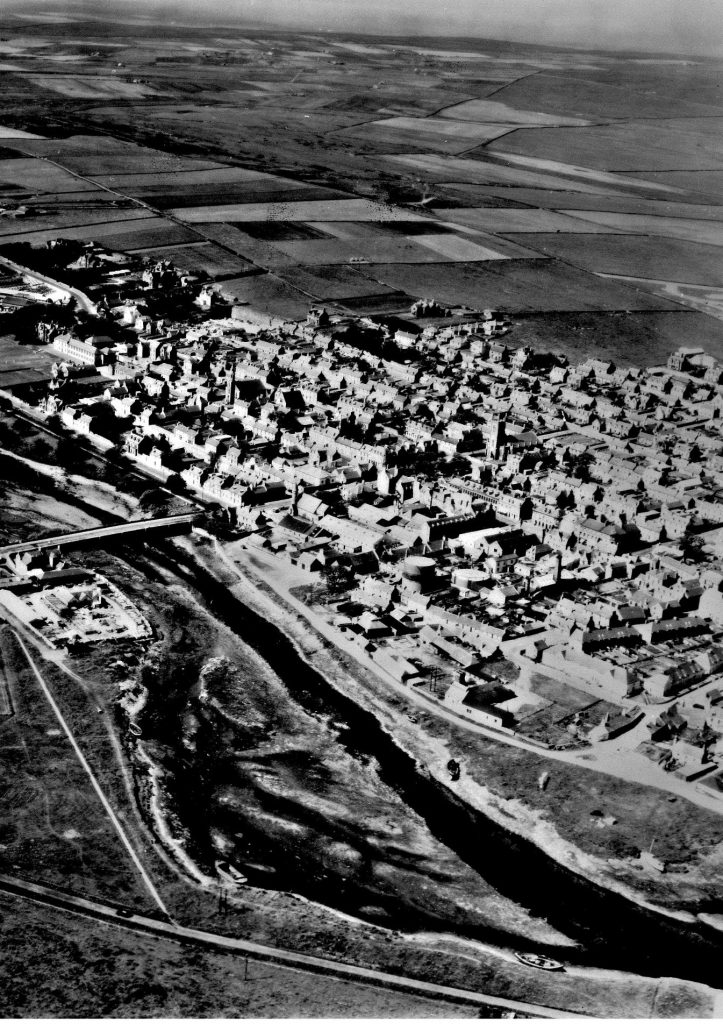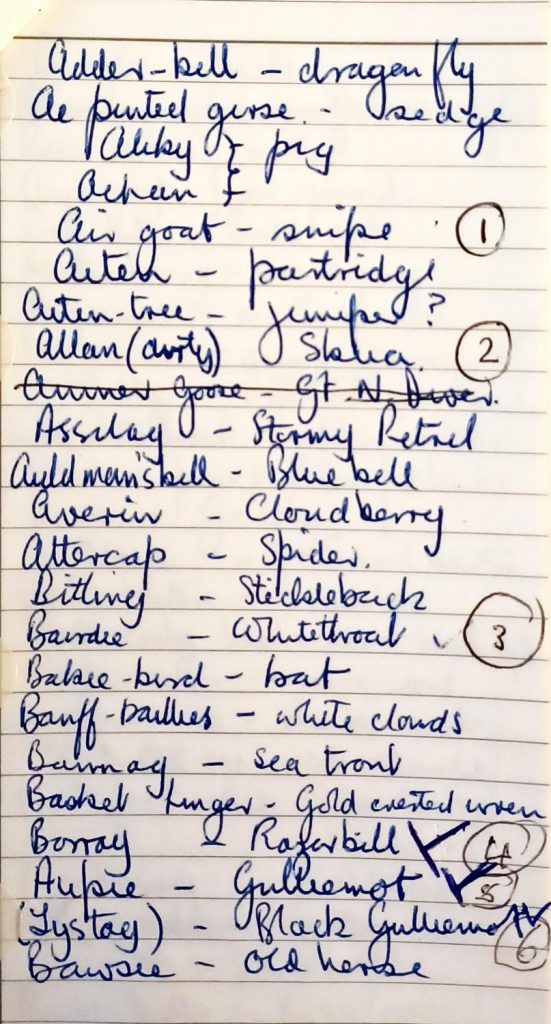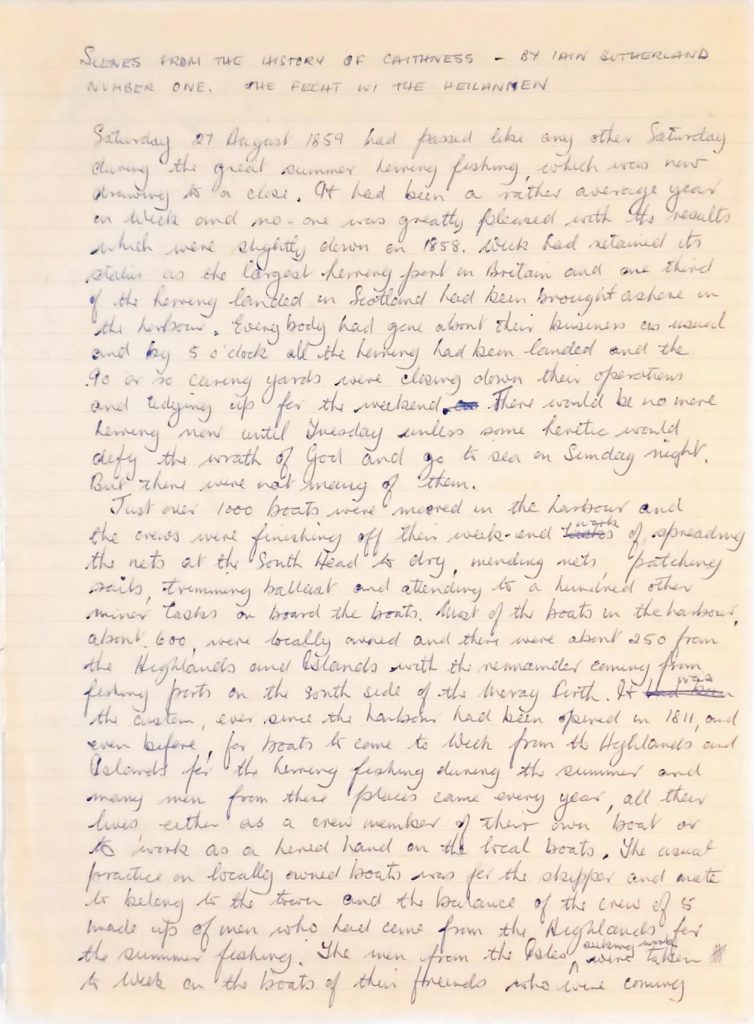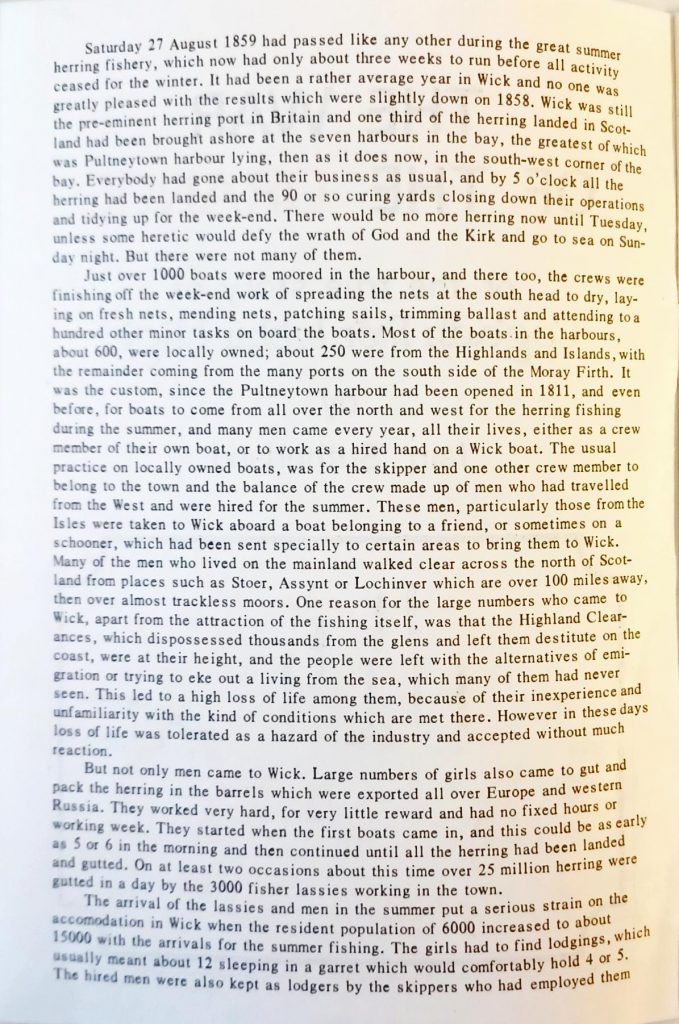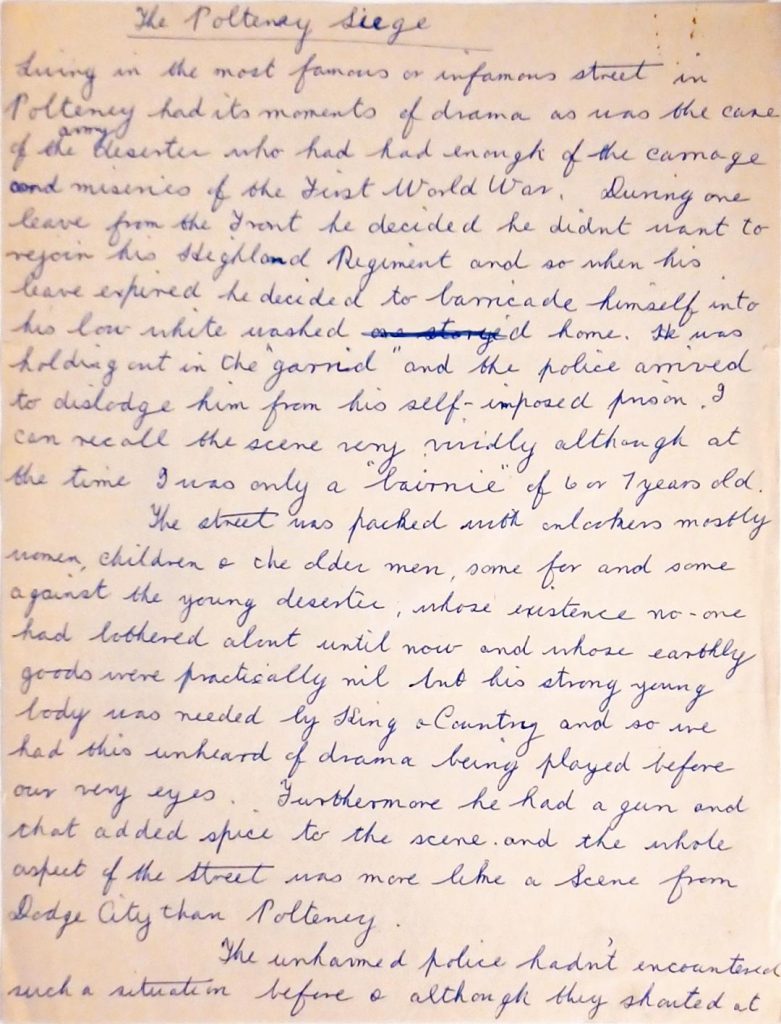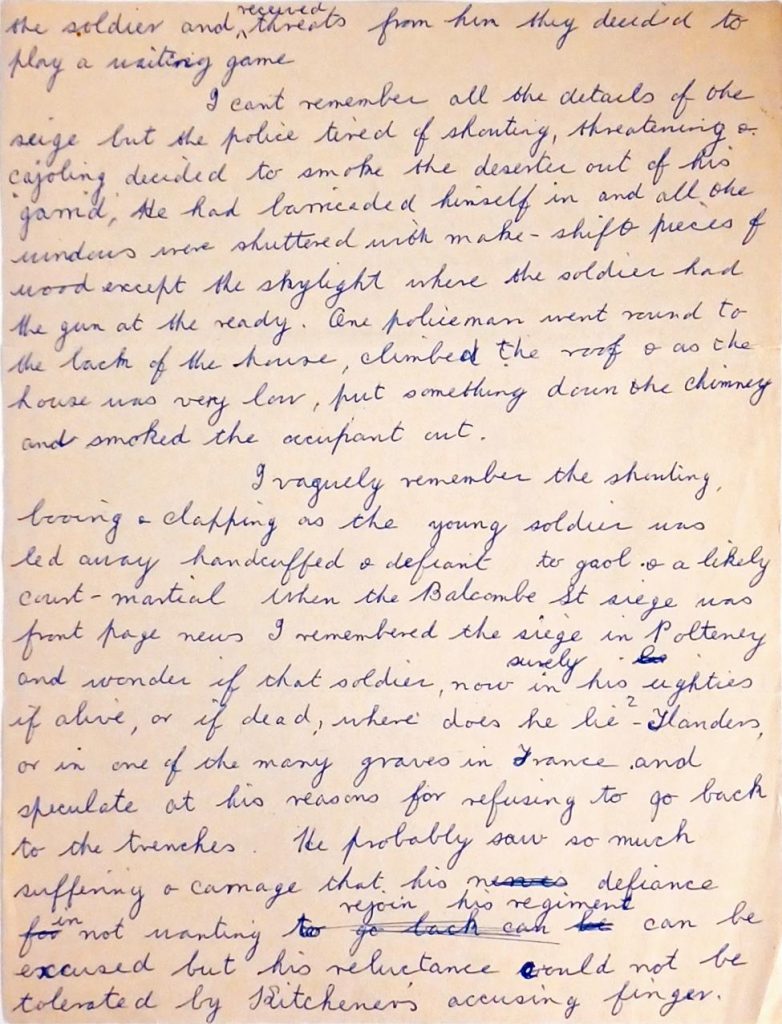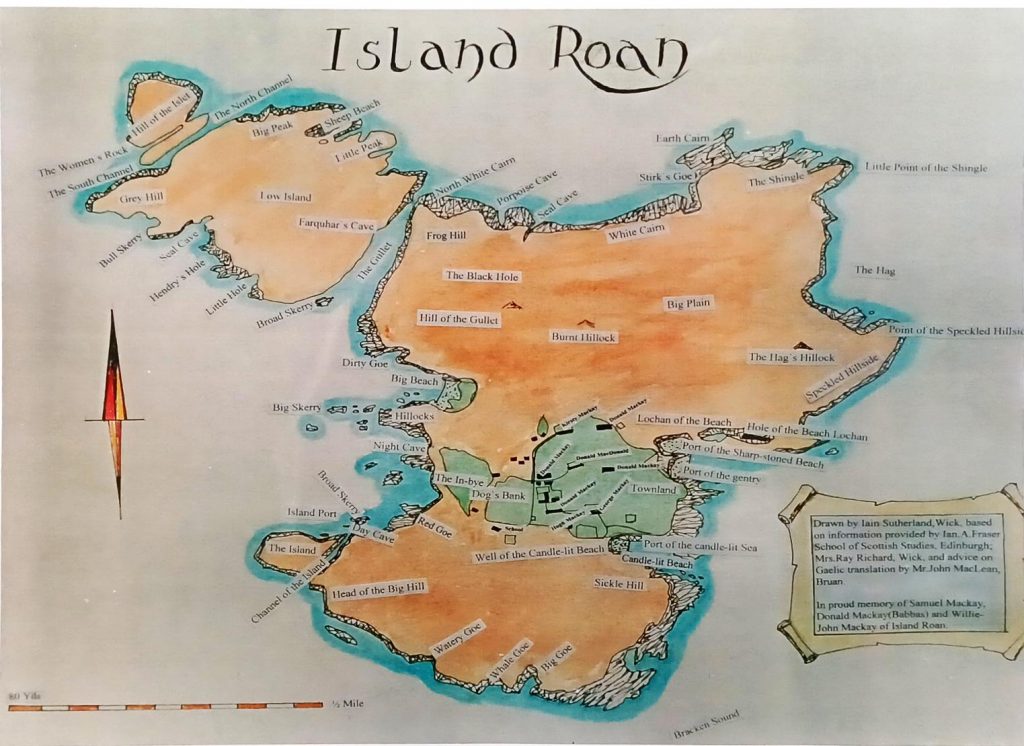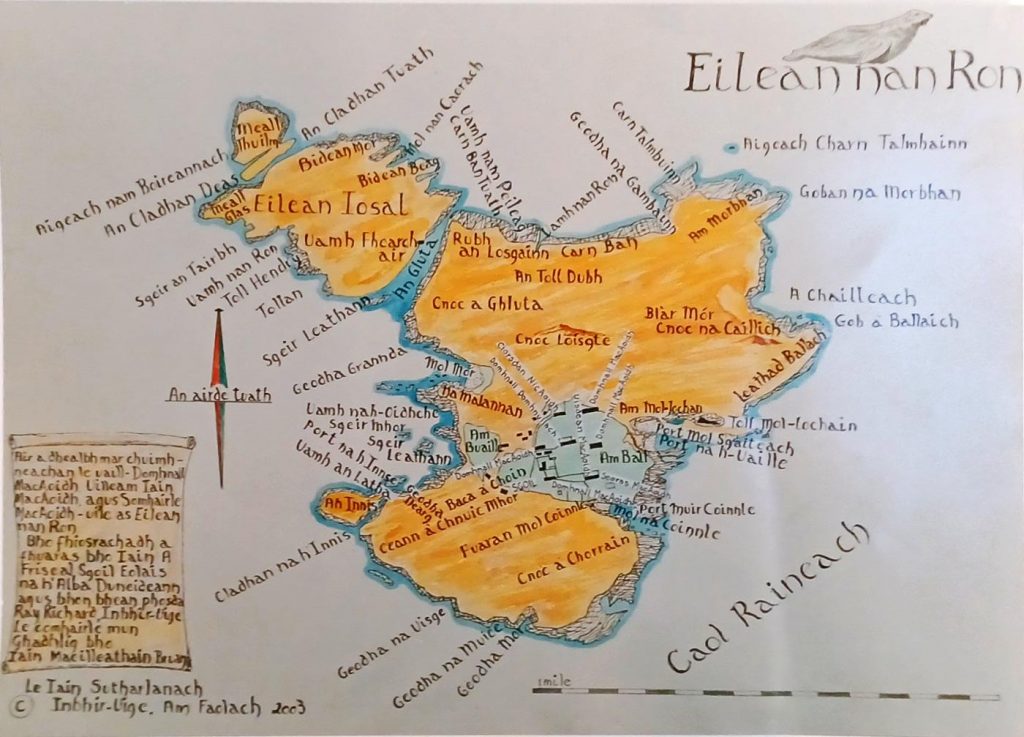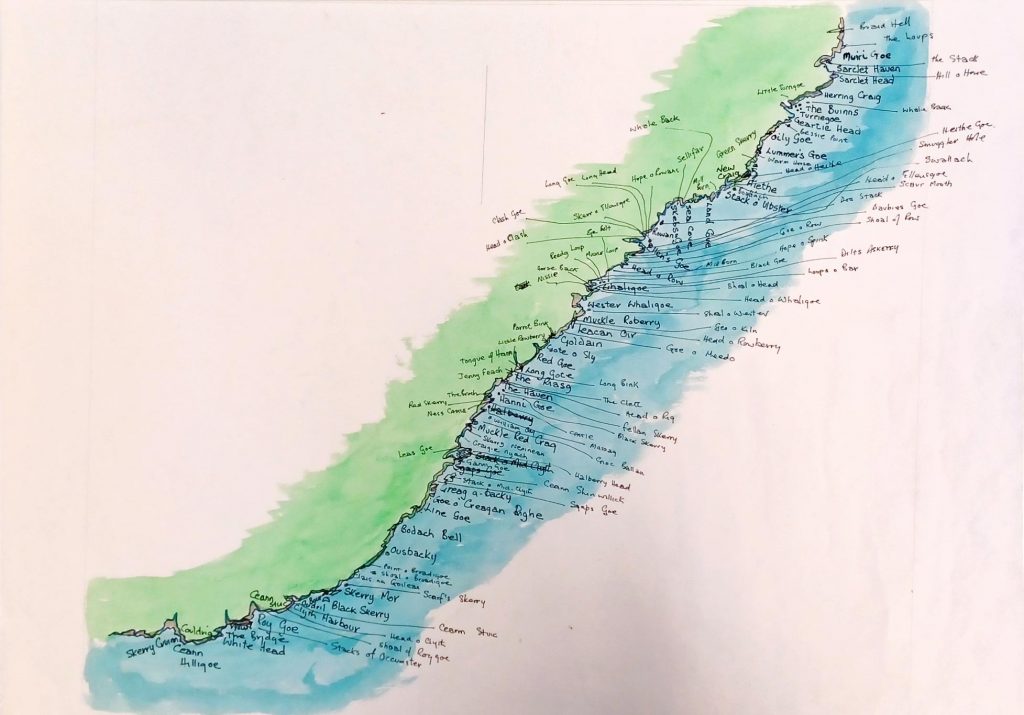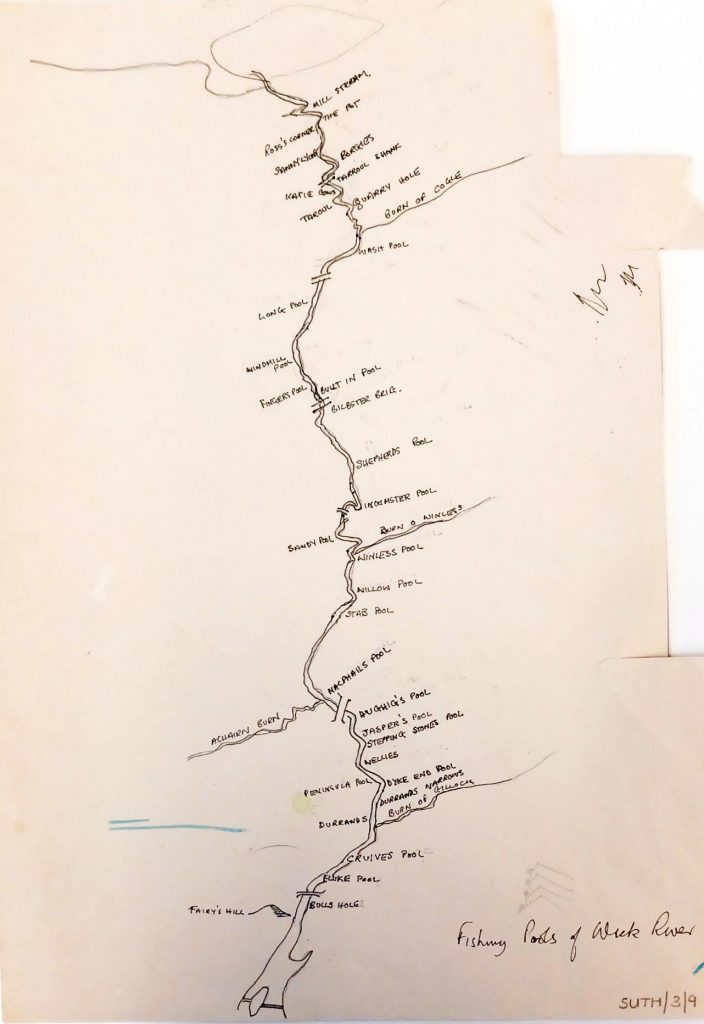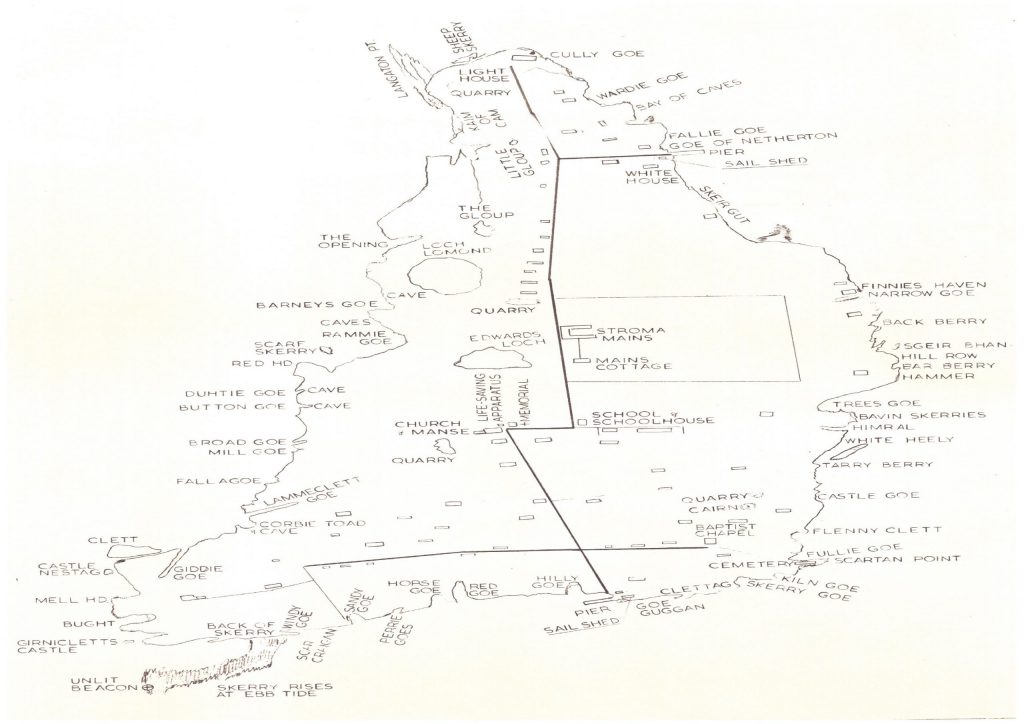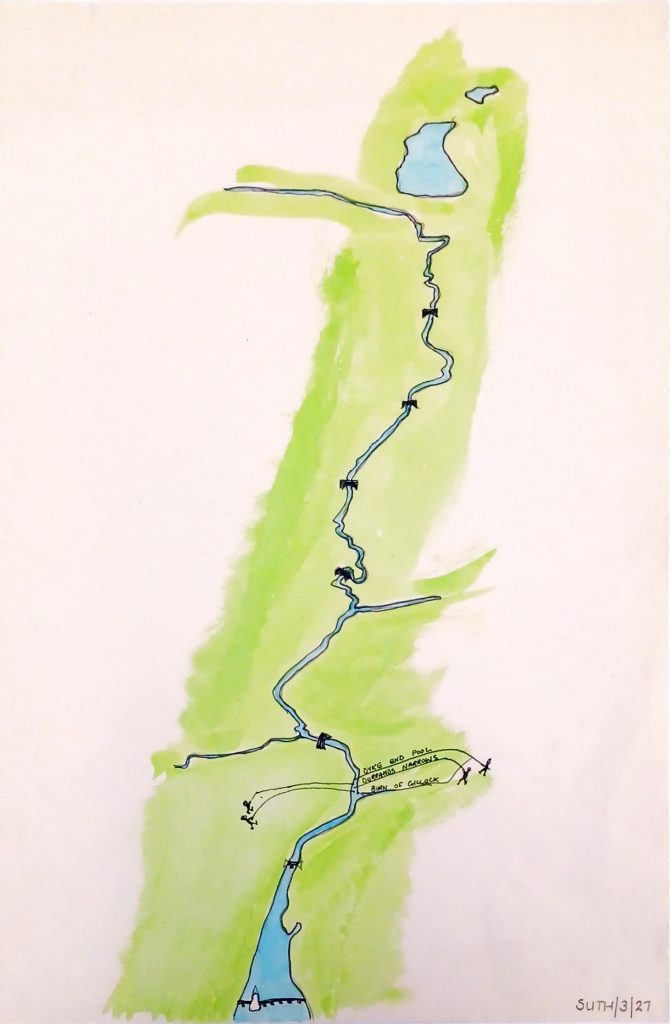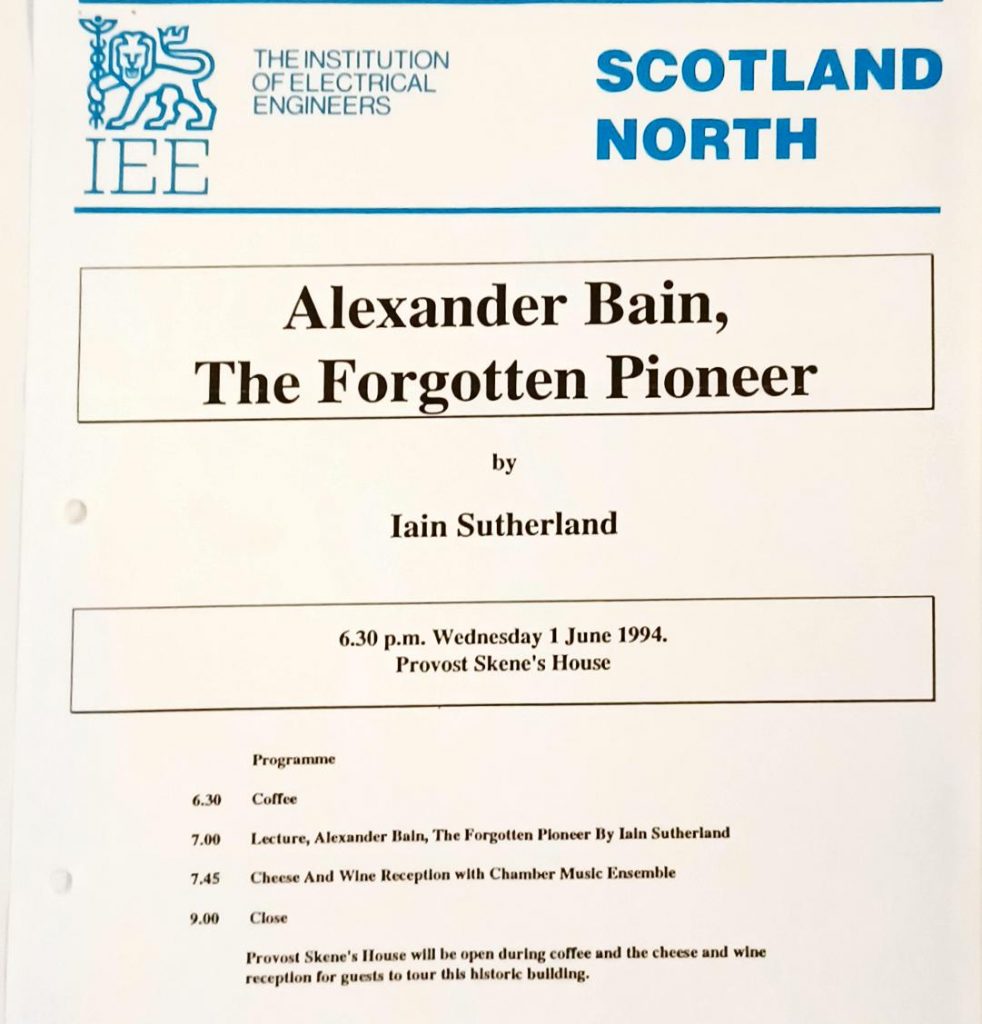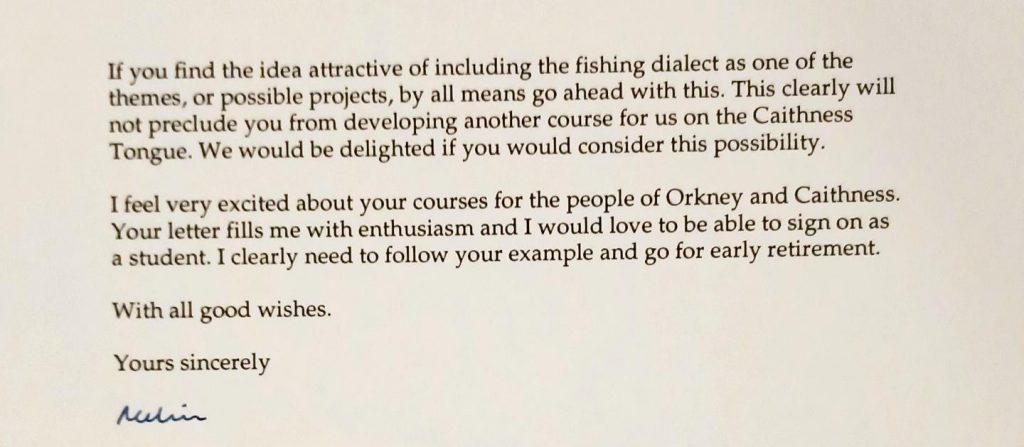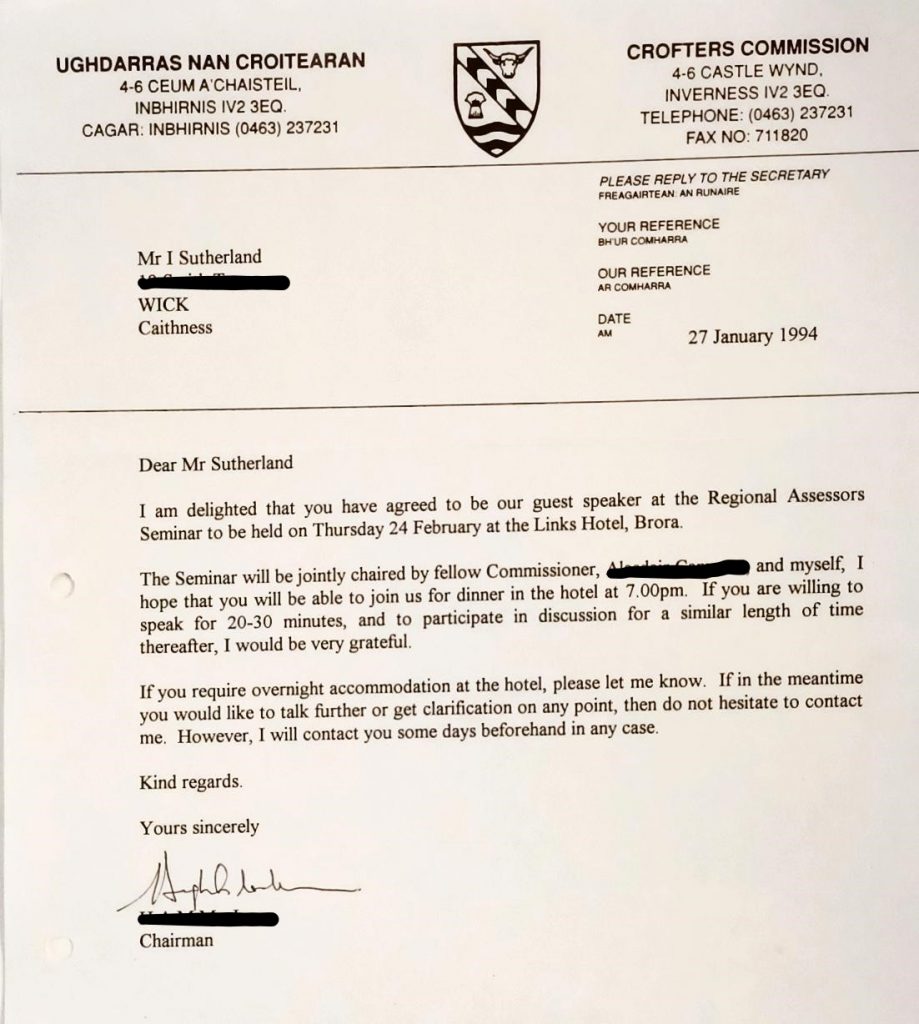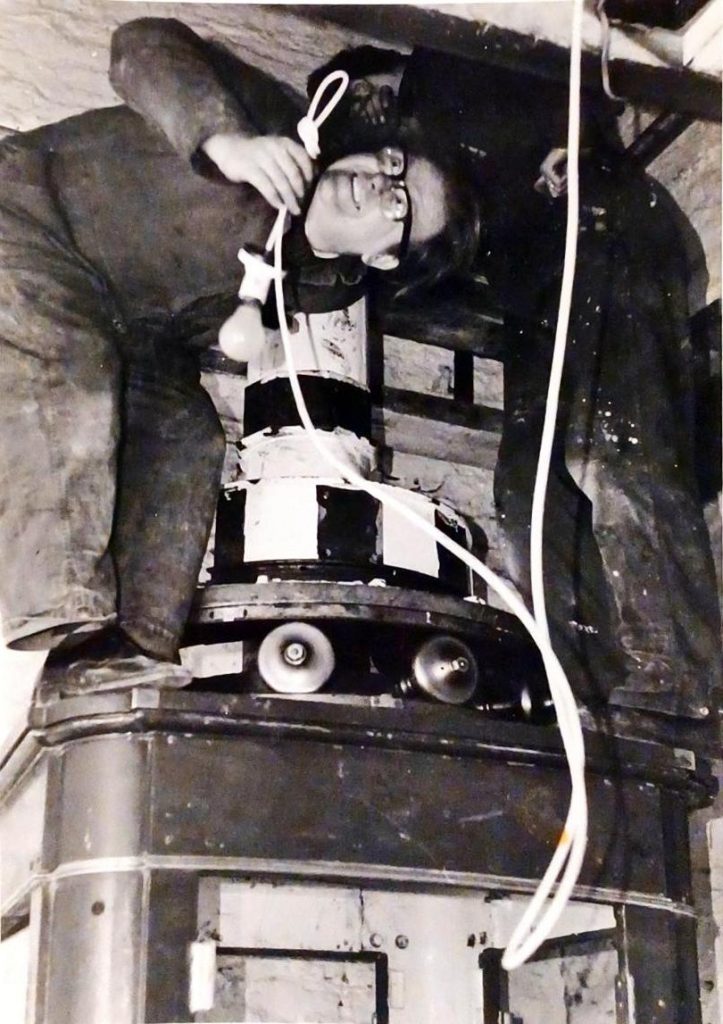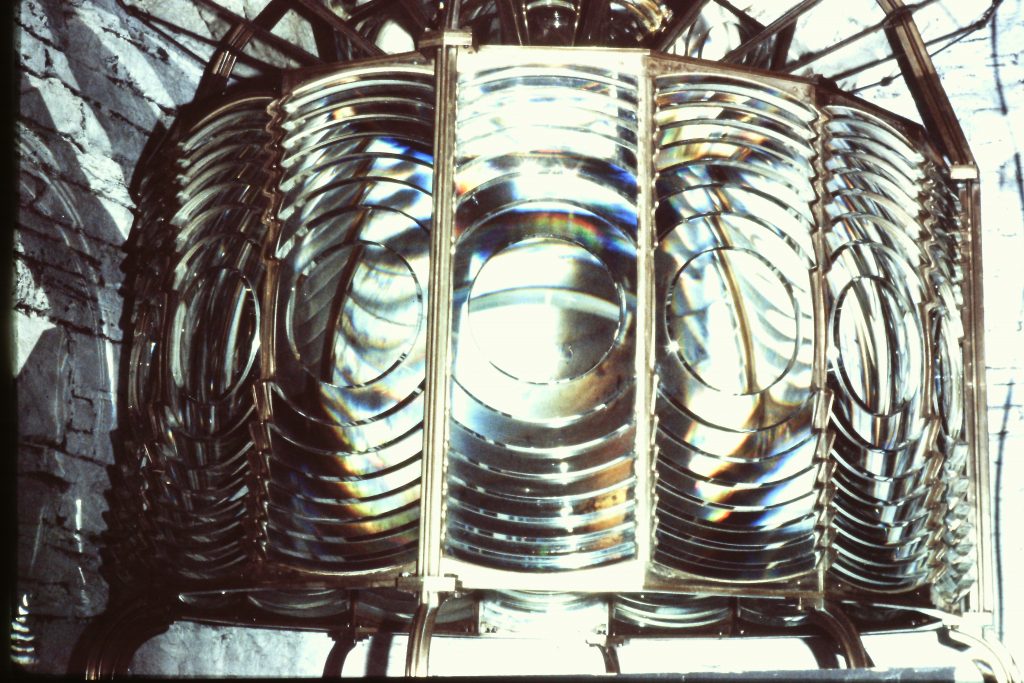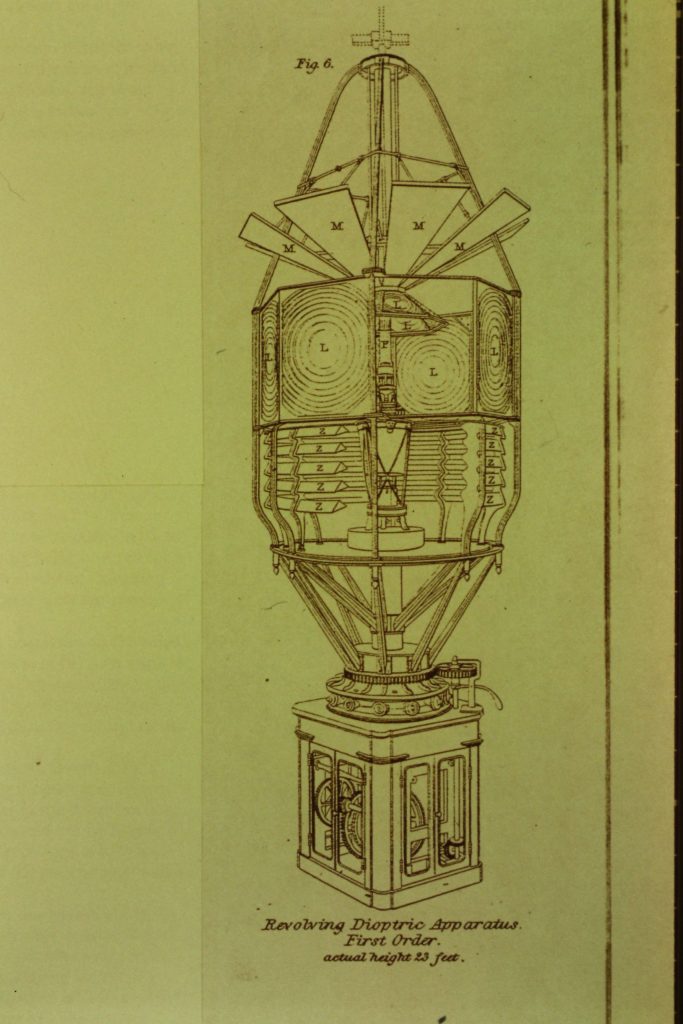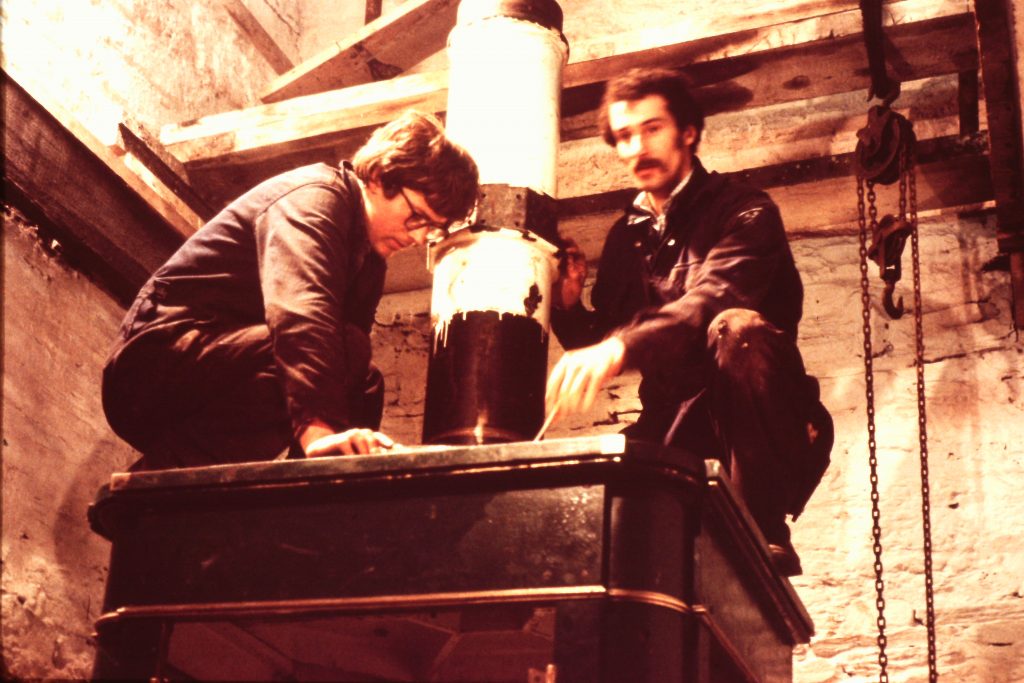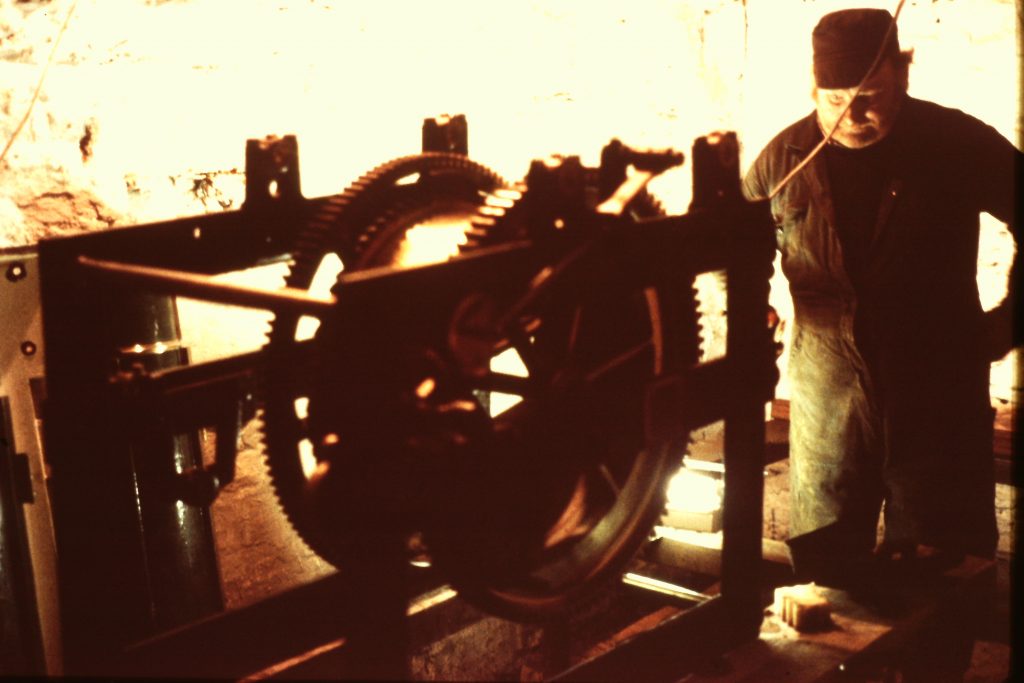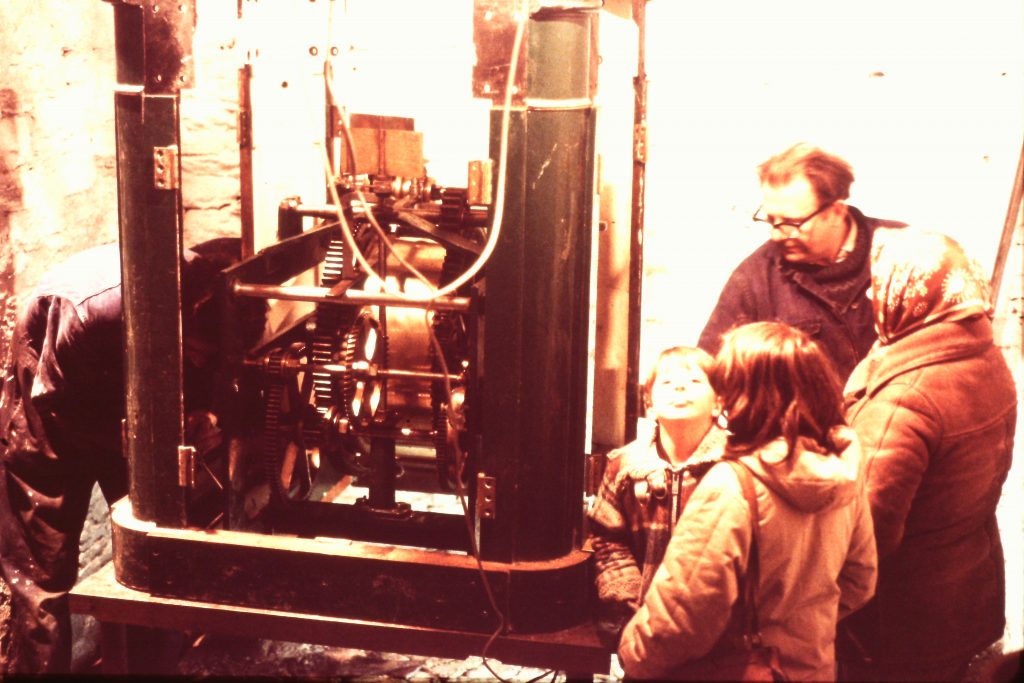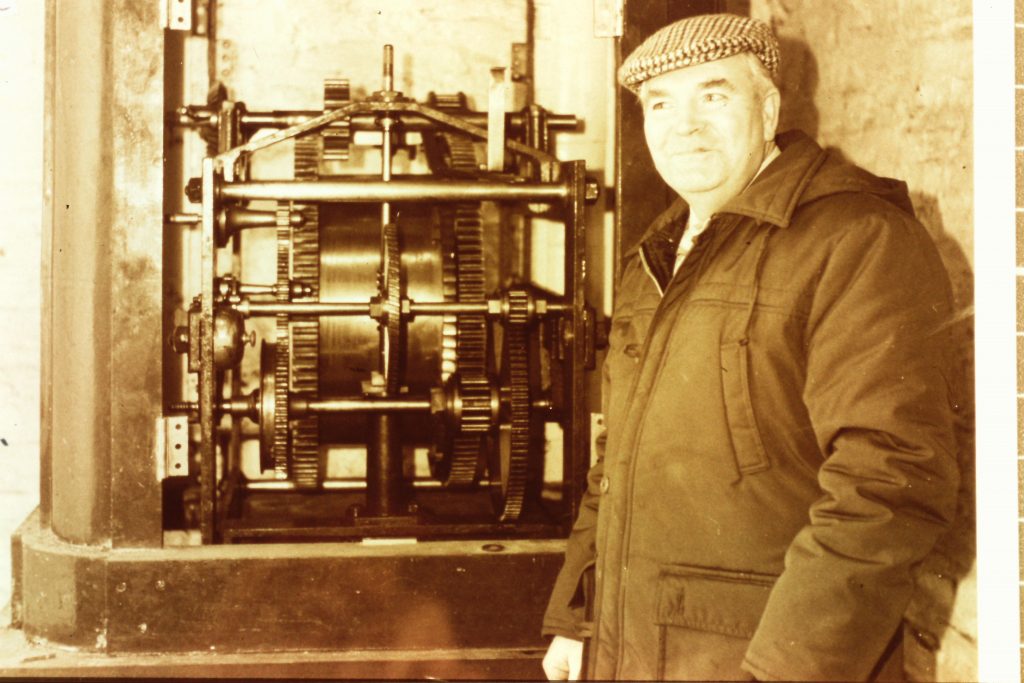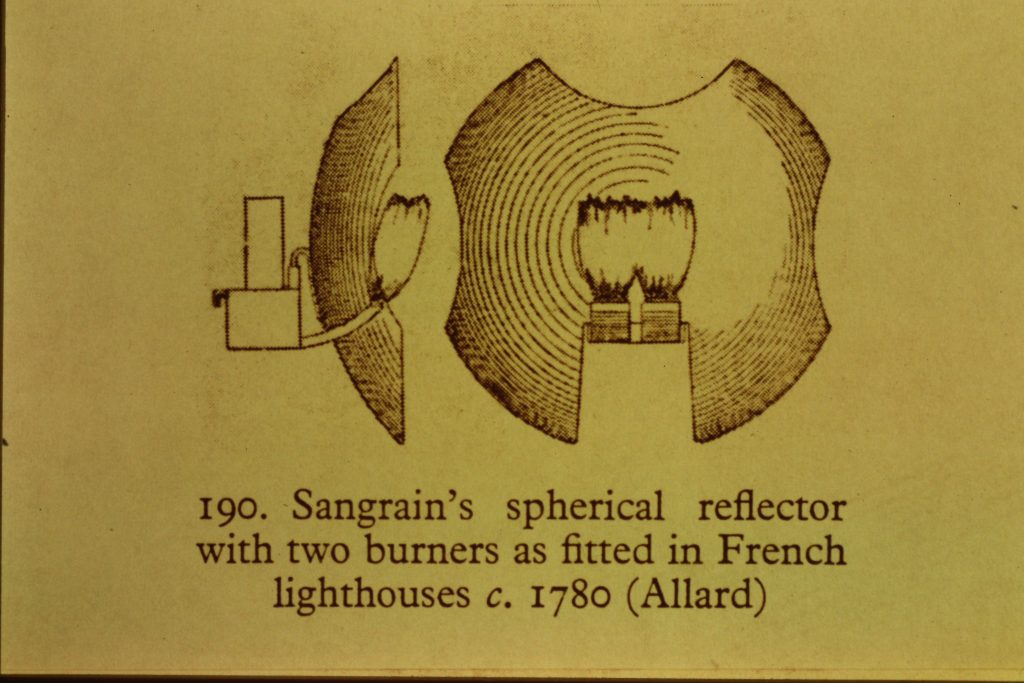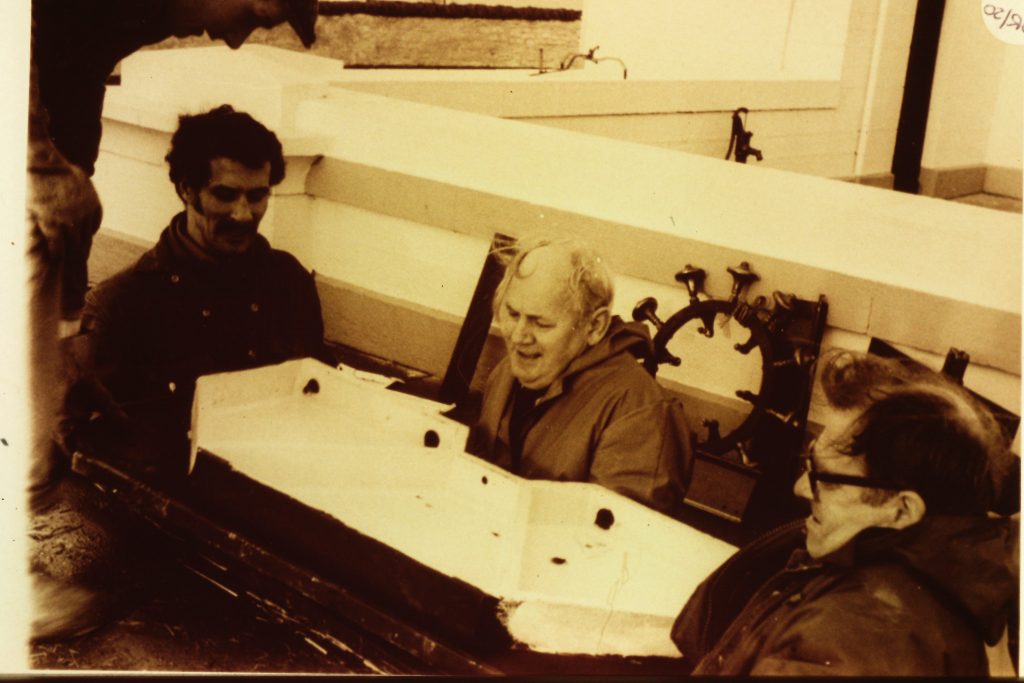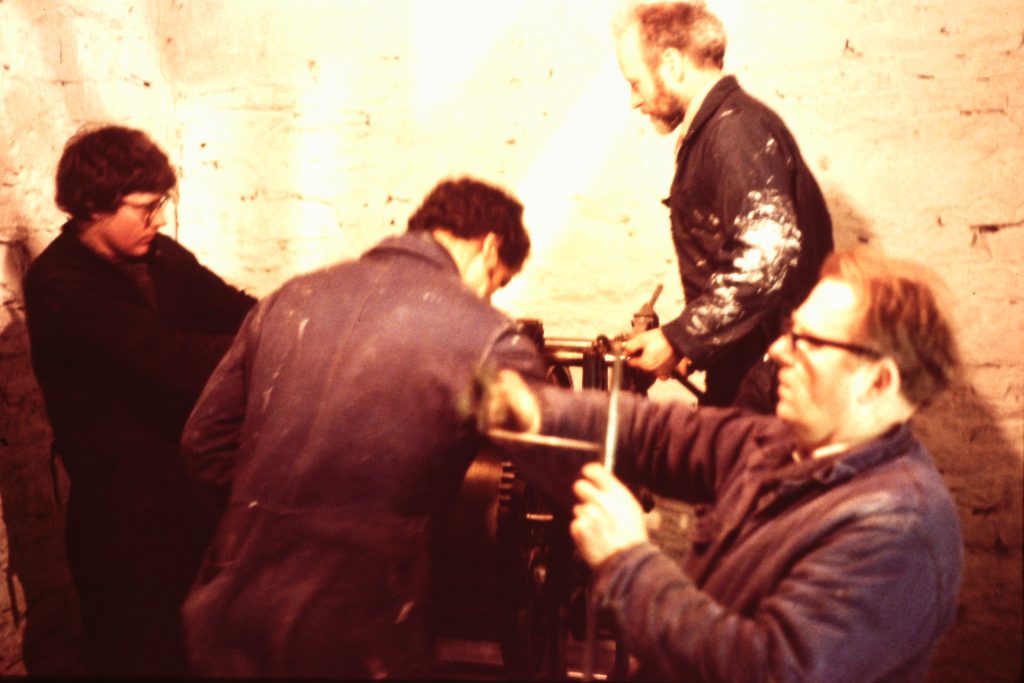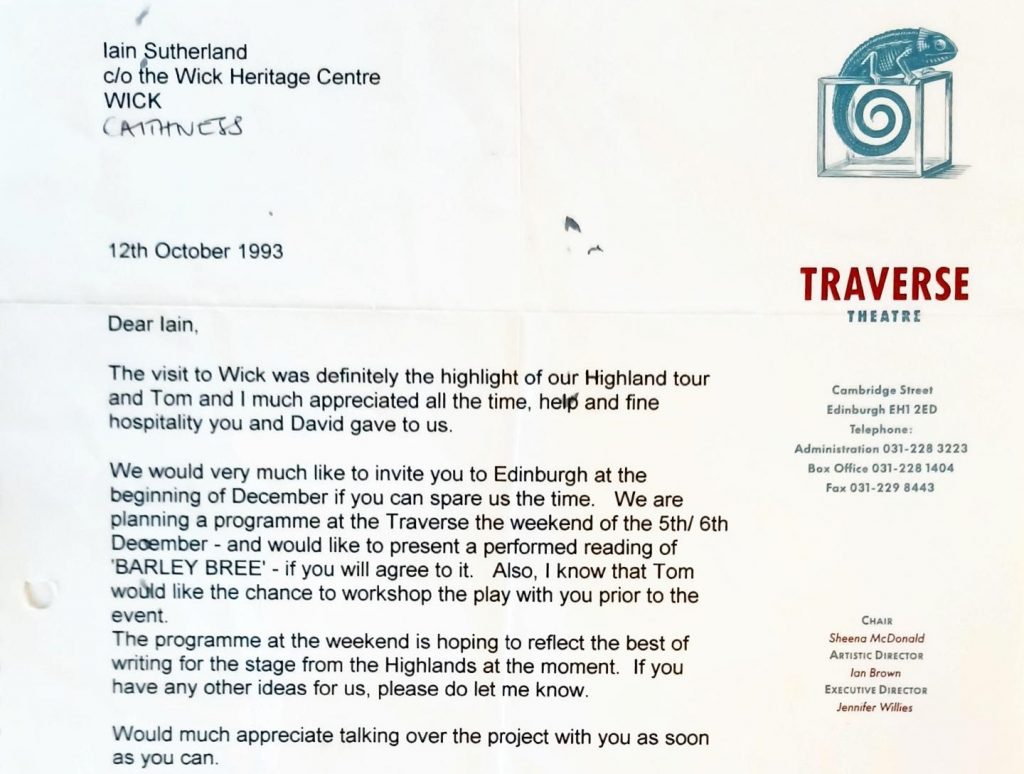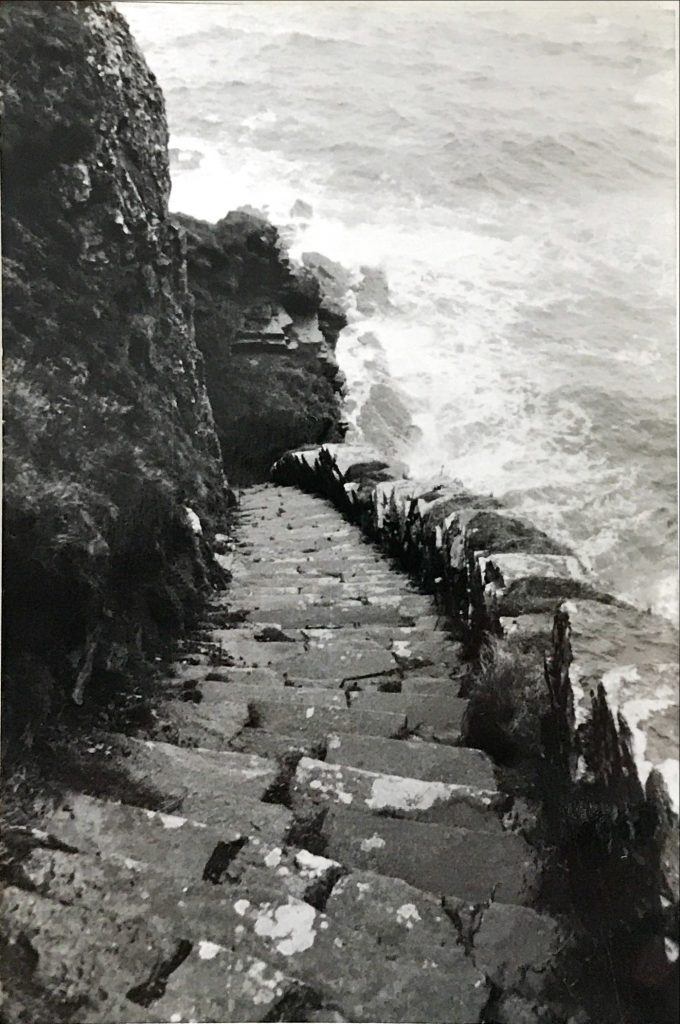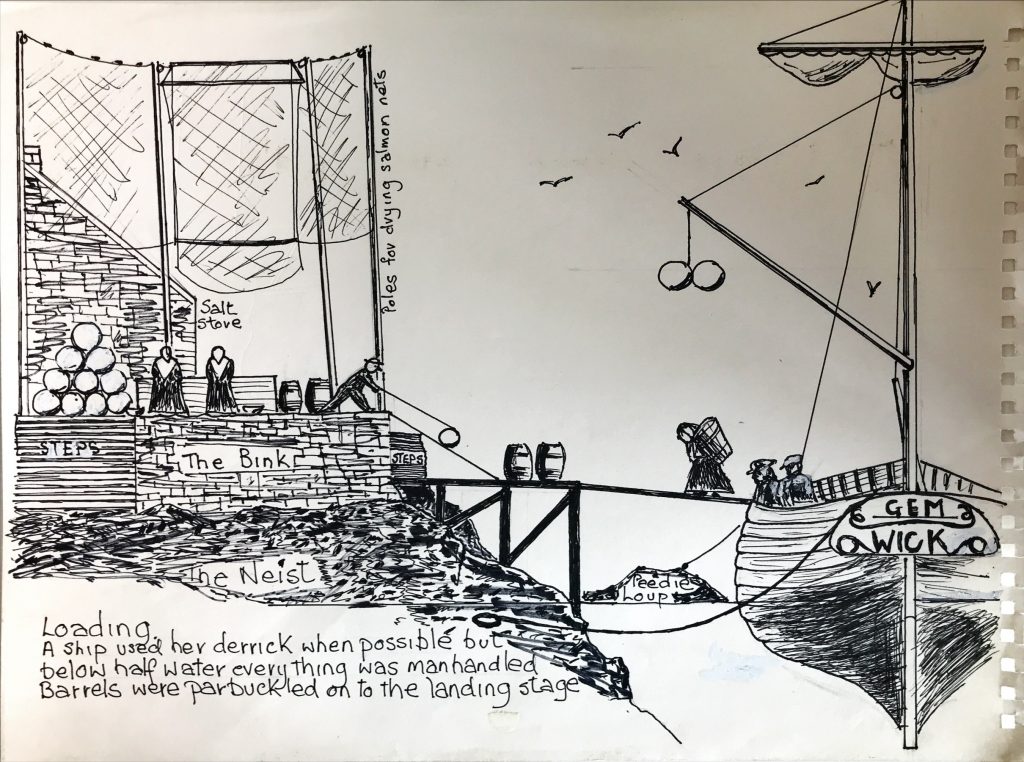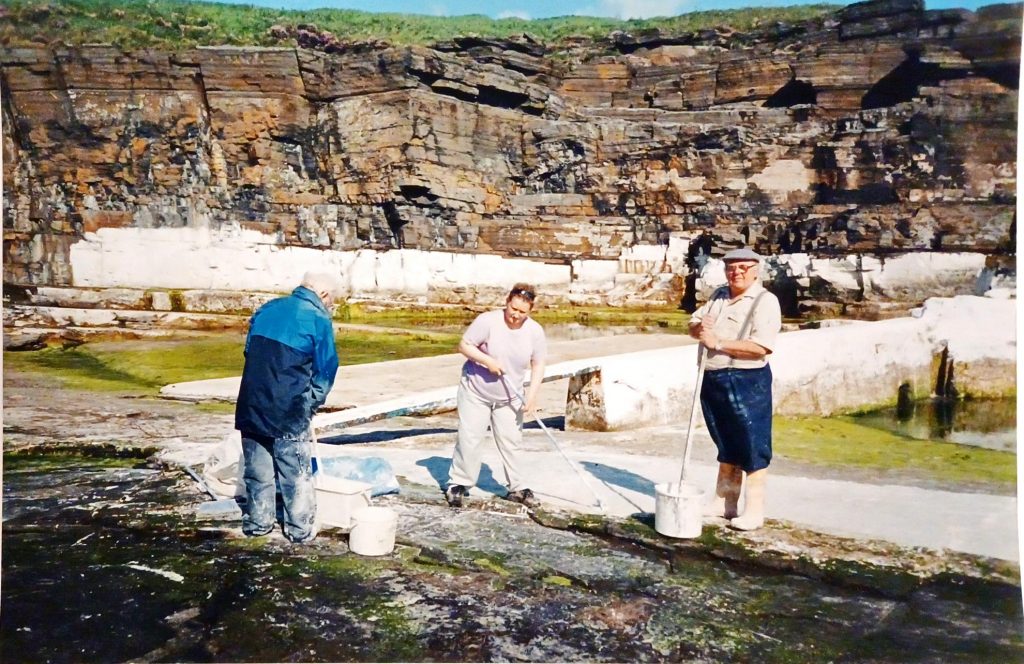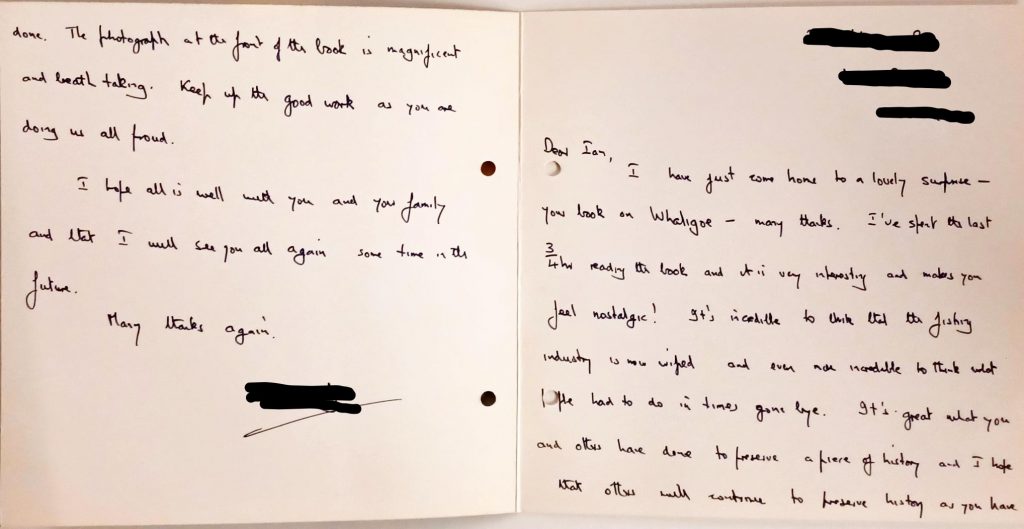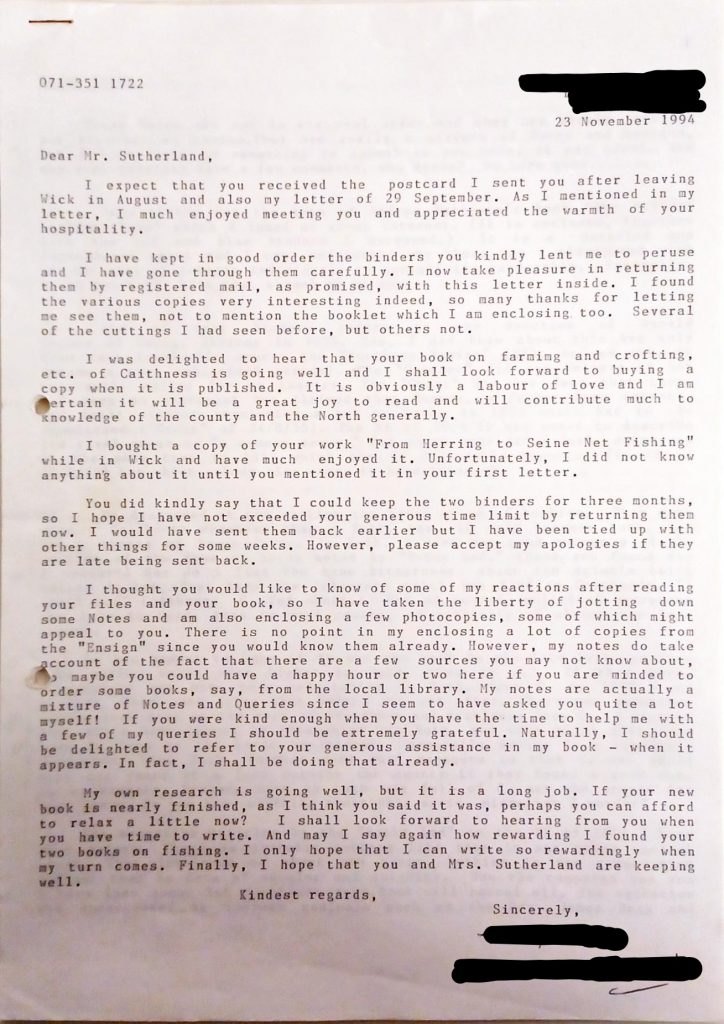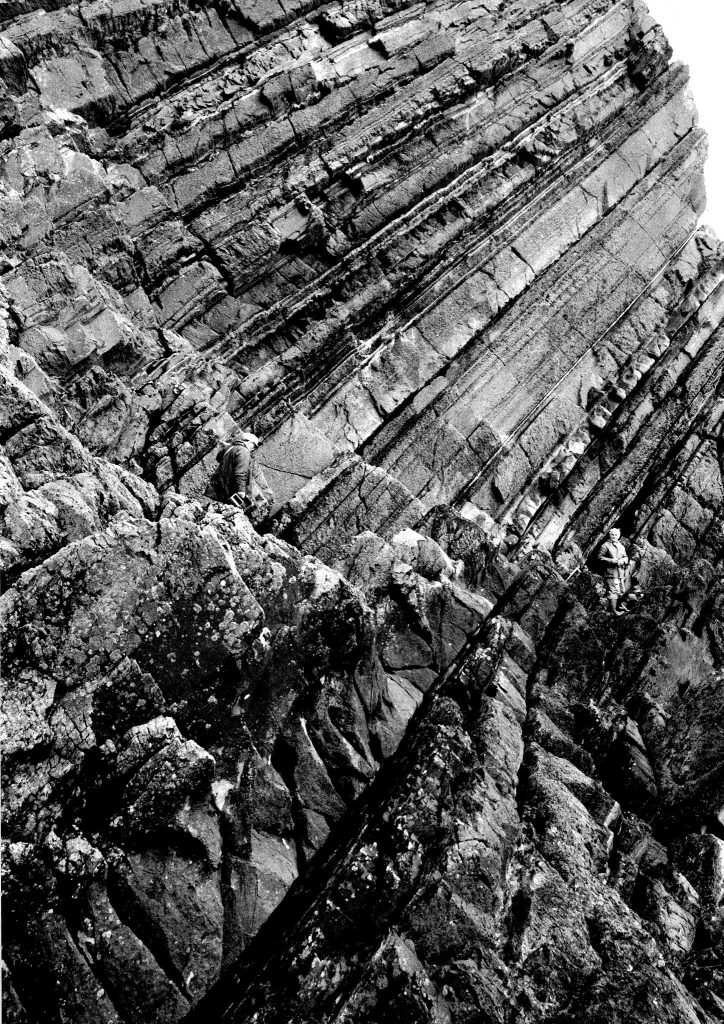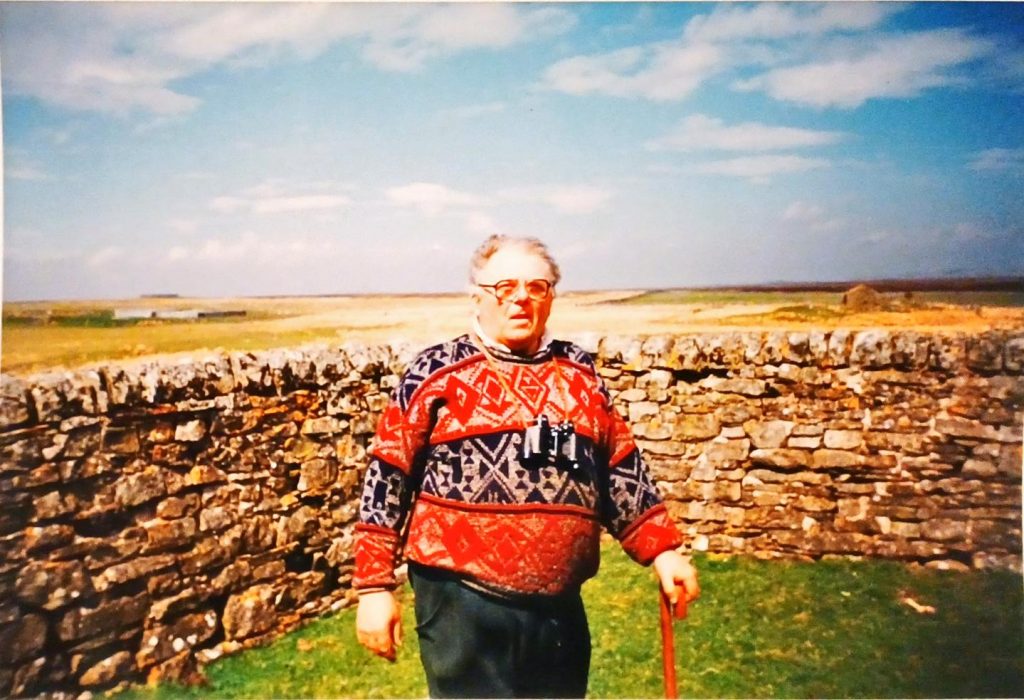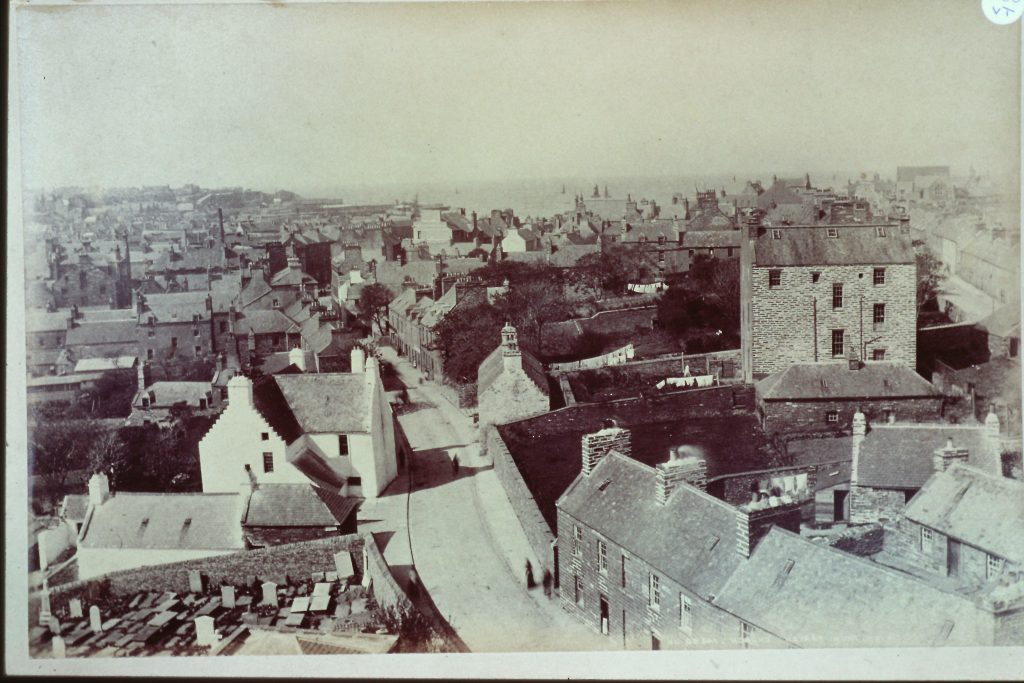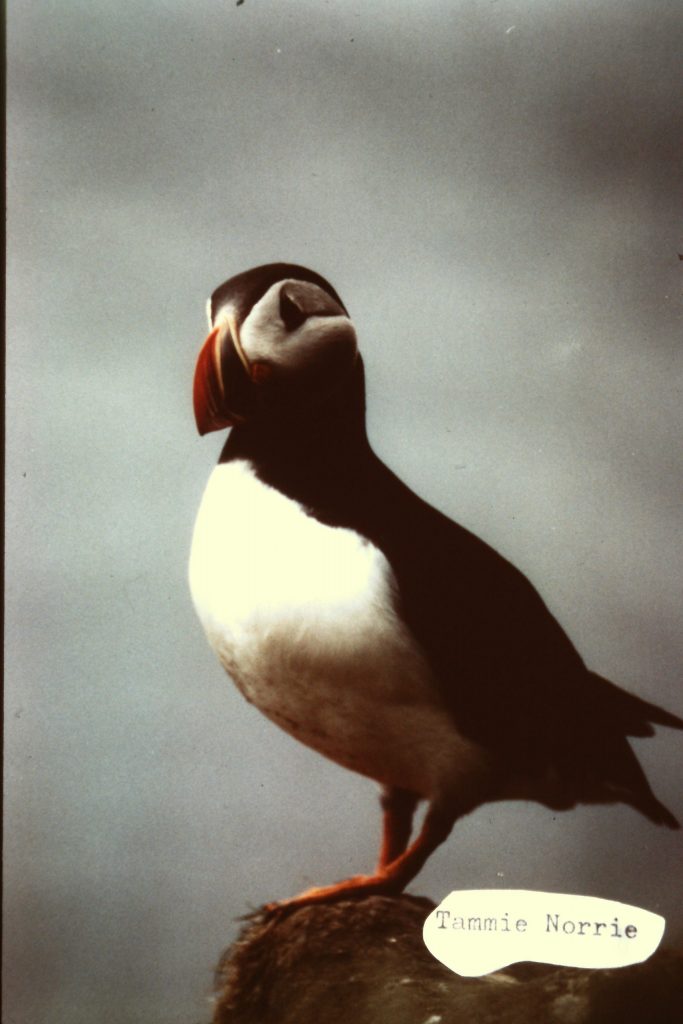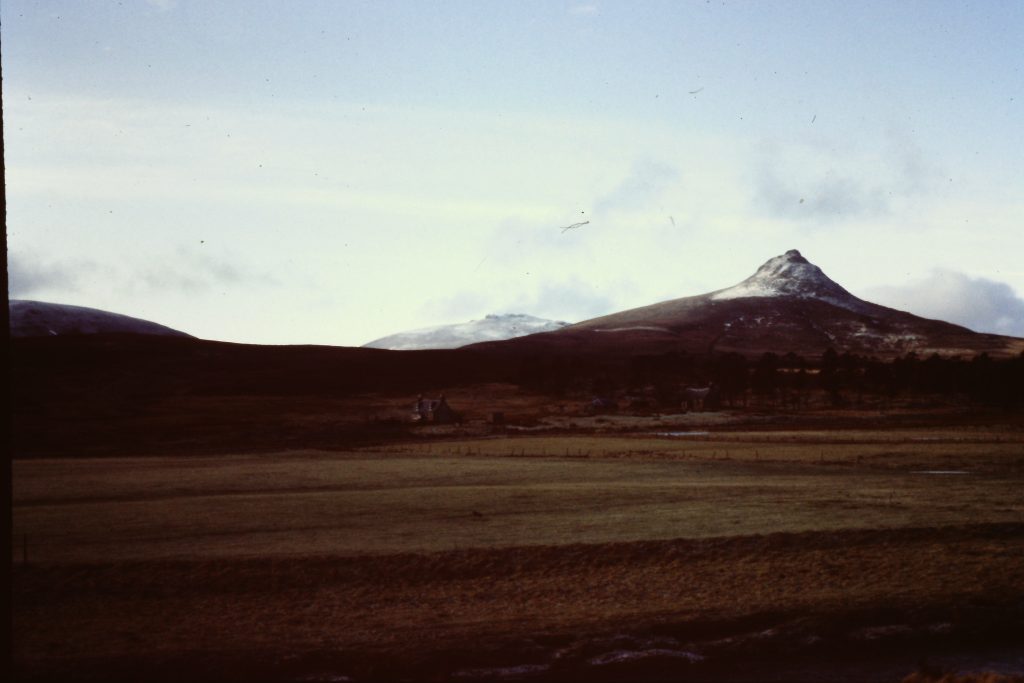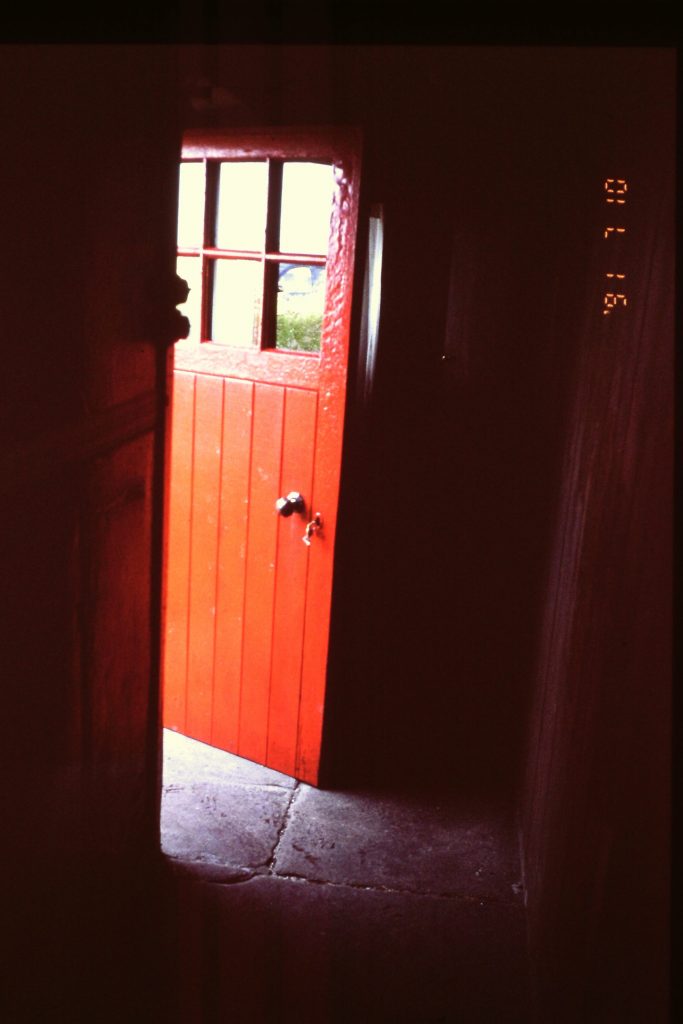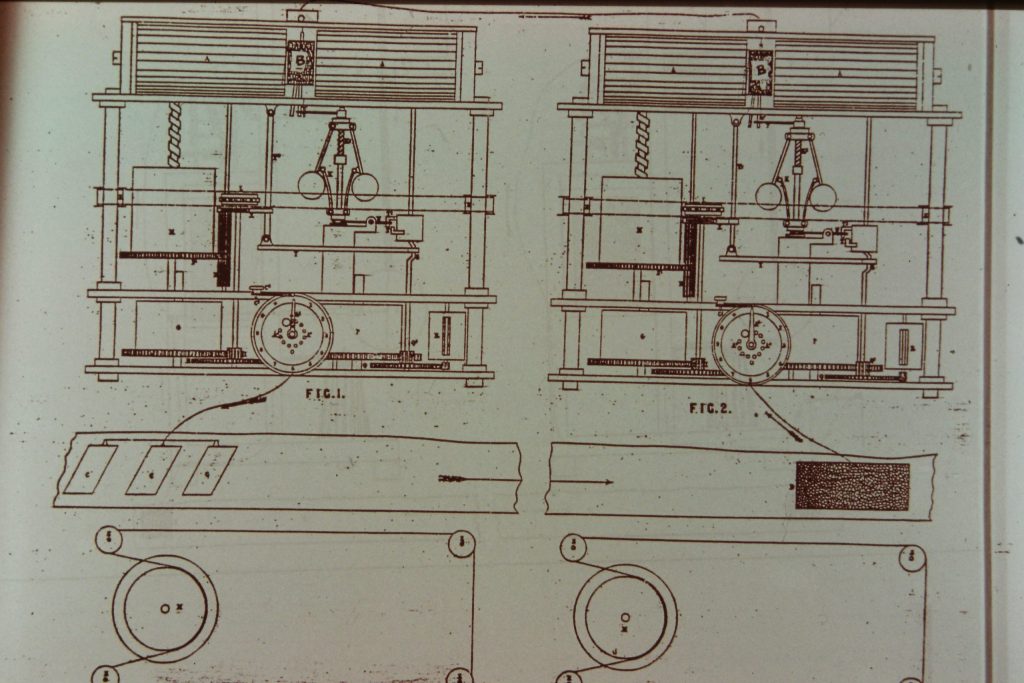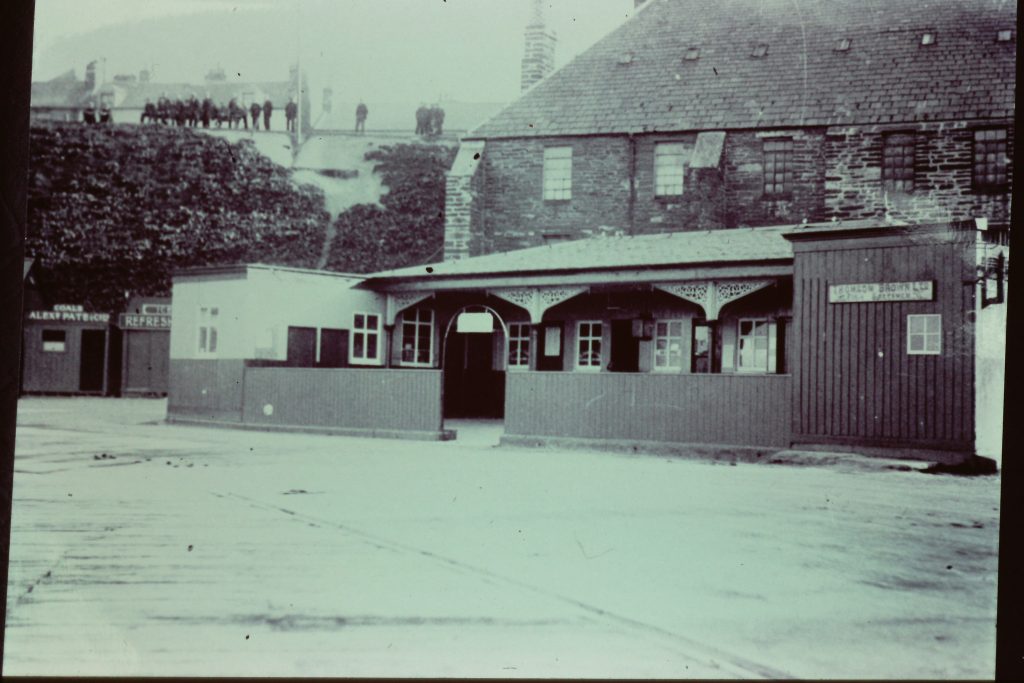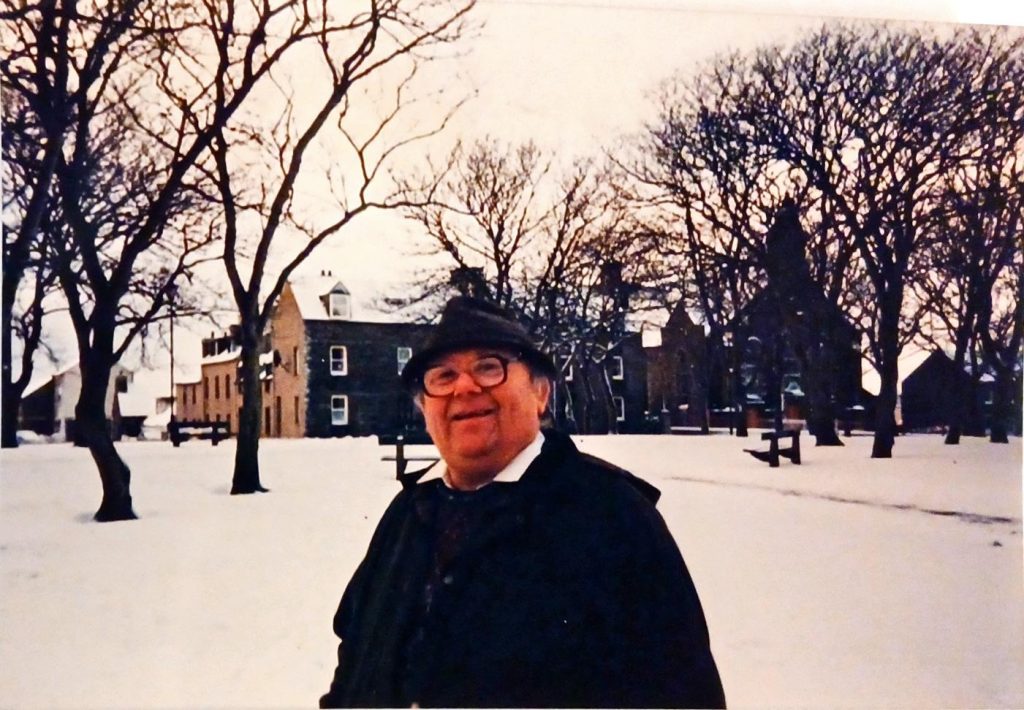
A Brief Introduction
Archives are unique historical records that allow us insight into the past, present and future. They allow for knowledge growth, community forming, wider perspectives, social pride, jurisdiction and accountability.
In this edition of Stories From The Archive we’d like to focus on a different kind of narrative. Through exploring a specific collection, the Iain Sutherland Collection, we’ll highlight some amazing archives and the importance of their deposit at Nucleus: The Nuclear and Caithness Archives. These archives reveal the importance of researchers visiting the archive, of depositors who leave their precious records in our care, and most of all, Iain’s unquenchable passion for the history of Caithness.
As well as extracting stories from the records held within the collection, we’d like to tell the story behind their journey to the archive and the importance of their continued preservation for posterity. We’ll look at Iain’s research, cartography and persistent advocacy for the county. In doing so the contribution Iain made to Caithness’s history, community and archives will ultimately shine through.
We understand that many of our readers will remember Iain fondly and would like to encourage anyone who would like to share their memories to email:
Alternatively you can post on our Facebook page here.
Author: Iain Sutherland
Iain Sutherland was a prolific local historian who was born in Wick and who lived in Wick all of his life. Iain was awarded an MBE for his services to local heritage in 2006. He was an employee at the Dounreay Nuclear Site for many years before retiring and becoming the Chairman of the Wick Society where he was fundamental in securing premises for the Wick Heritage Museum and preserving local heritage. Iain sadly passed away in 2020, aged 83.
Iain Sutherland is the author of many works including:
Wick Harbour and the Herring Fishing
From Herring to Seine Net Fishing
Dounreay: An Experimental Reactor Establishment
The Wick and Lybster Light Railway
Caithness 1770–1832
Sinclair and Girnigoe Castles
Vote no License
A Caithness Dictionary
The War of the Orange
The Fishing Industry of Caithness
Whaligoe and Its Steps: The Unique Harbour
and the plays
The Silver Sprig
By the Cran
King James VIIII
Barley Tree
Read Treasure Island
Many of his works can be found both in our searchroom reference section at Nucleus and in draft copies and research notes within his collection papers.
Provenance: Private Deposit
The Iain Sutherland collection was deposited by Iain Sutherland himself and without depositors such as Iain, the archive would suffer dearly. As a local authority archive the Caithness Archive holds both records of local government and those of private businesses, societies and individuals. This invaluable mix of the official and the personal allows for a wider view of the historical record of the county. Without generous donations, the historic record would remain less complete, with fewer perspectives and fewer opportunities for inclusive representation. Private deposits are important as they complement the official record, bridging the gap between the bureaucratic and the personal. They instil a sense of ownership within both the depositor and the community over the stories and histories of their local area.
If you or someone you know believes they have records of enduring value to the county of Caithness then we’d love to hear from you. We welcome all conversations and we’re always very excited about new deposits to the archive. You can contact us by email ([email protected]) and by phone (01955 602 444).
Format: Research papers, correspondence, cartography, photographs, 35mm slides, plays
The archives within Iain’s collection are diverse and compelling. There are research papers; correspondence with individuals, societies, institutions and the government; hand drawn maps and guides; photographs of places around Caithness; 35mm slides of lectures; plays written by Iain and much, much more. We have picked a small collection to share with you here. The rest can be explored by anyone who visits Nucleus. For the full catalogue of Iain’s collection, and to explore the rest of the Highland Archive Service’s collections, please visit:
Whilst still exploring the compelling stories within the collection, the archives explored below give us a sense of the importance of Iain’s research and the great many gaps within the historic record that he filled. Iain’s use of archival material makes clear the importance he placed upon a sound and informed exploration of Caithness’s history. His subsequent deposit of his research materials, papers, drawings and photography within the archive reveal the value he placed upon their safekeeping and the ability of archives to bring people together.
Research, local history and community
Research
Iain wrote a myriad of books, lectures and talks. The research time he gave and his passion for studying and representing Caithness is evident throughout his collection. This is made all the more potent due to the vast majority of his research being undertaken in a pre-internet world. Over the last twenty odd years Google searches, online catalogues, email and video links to the other side of the world have become the norm for many researchers. It can be hard to imagine the patience needed, the innumerable hours spent searching and the great many letters that were written in order to accomplish research goals before these tools became available.
Iain knew that much of the county’s history had been left underrepresented and he committed himself to reaching out for answers. Below are a few examples of letters sent out by Iain. One is to the Society of Antiquaries of Scotland requesting permission to research collections concerning Viking and medieval landscape and agriculture, or to be recommended sources that he can consult. Iain mentions the incomplete reference tools available at the local library showing that he is actively seeking to fill knowledge gaps and make them available locally – the work of a truly local historian. You can click on all pictures to enlarge them and zoom in.
The second letter is to the Air Photography Unit of the Scottish Development Department seeking to purchase two aerial photographs of Caithness in order to assist in making a map. We’ll be showing examples of Iain’s many maps and drawings below. It is presumed that he was in touch with this department fairly regularly as within the same file are two aerial photographs of Thurso. The letter and the two pictures of Thurso are reproduced below.
The stories of his many research journeys are in themselves evidential records, giving insight into his research methodology and the unbelievable scope of his passion and interest. Myriad aspects of the Caithness story and history are represented throughout his correspondence and reveal the gaps in knowledge and insight he constantly complemented.
The extent of the correspondence, filling numerous files, demonstrates not only the eclectic interests and subjects of his research, but also the patience and determination needed to commit to the undertaking that he did. The value of his work is continually seen, even today, when simple Google searches often bring back no results for many of the subjects he wrote on; or more tellingly lead you directly to one of his books as the only known source of compiled information.
One great example is The Caithness Dictionary which compiled words and expressions which were in common use in the county of Caithness until the latter third of the twentieth century. After this time, the books blurb laments, ‘the introduction of television, on top of a century of persecution by the teaching profession, finally killed the language off’. Below are some handwritten notes of Iain’s showing a small fraction of his lengthy lists of Caithness dialect words. This example concerns local names for wildlife.
We have also included a short audio recording from one of Iain’s numerous oral history interviews where he discusses the above mentioned disappearance of the local Scots language with an interviewee.
Iain Sutherland Interview – Dialect and Stories – SUTH/5/27
Further correspondence reveals research into the acidification of soil by tree species throughout Scotland. This includes correspondence with a professor at the University of Aberdeen showing the extent of Iain’s passion for the natural environment, and a specific concern for the wildlife of Caithness.
The final products of his research, his books, talks and lectures are a fine testament to the time and effort given in pursuit of Caithness’s untold stories. Below is an example showing a page from an initial draft copy written by Iain and then the final booklet page from The War of the Orange. They really give a sense of the writing process and the craft needed to hone it so well.
Also within Iain’s extensive recordings is an extract of him telling the story of the War of the Orange in the early 90s. You can listen below to Iain telling the fascinating story in two parts.
Iain Sutherland tells the story of the War of the Orange – Part 1 – SUTH/5/109
Iain Sutherland tells the story of the War of the Orange – Part 2 – SUTH/5/109
Local history and community
As well as seeking out Caithness history through institutions and societies, Iain was also a great believer in documenting local history through the capture of memories and reminiscences. Here, again, we see private and individual stories complimenting the official body of historical records.
Within the collection are over 100 CD-ROMS of interviews conducted by Iain exploring the stories and memories of people from Caithness. There are hundreds of hours of fascinating conversation to be explored.
Below are extracts from only a few of these audio recordings and they give a sense of the wonderful local heritage and stories they captured. In this first extract we hear Iain interviewing a local woman about her time working as a herring gutter around the UK.
Iain Sutherland Interview – Herring Gutters – SUTH/5/74
This extract with a local Wick man discusses World War I, Wick harbour and boats.
Iain Sutherland Interview – WWI, Wick Harbour, Boats – SUTH/5/12
Finally, here is a wonderful clip of a woman singing a song about the Caithness Family History Society.
Caithness Family History Society song
Today, you can explore this fine tradition of oral histories being continued through the Wick Society’s Wick Voices Oral History Section, available online here: https://www.wickheritage.org/voices.php.
Alongside Iain’s interviews there are also wonderful pieces of correspondence with local people writing of their experiences and of how the county has changed over time. One stand out letter is from a local women named Ina who sent Iain at least three stories. One story remembers a siege in Pulteneytown during the First World War. Below is a reproduction of the letter and a transcript.
Transcript:
The Polteney Siege
Living in the most famous or infamous street in Polteney had its moments of drama as was the case of the army deserter who had enough of the carnage and miseries of the First World War. During one leave from the Front he decided he didn’t want to rejoin his Highland Regiment and so when his leave expired he decided to barricade himself into his low white washed one storied home. He was holding out in the “garrid” and the police arrived to dislodge him from his self-imposed prison. I can recall the scene very vividly although at the time I was on a “bairnie” of 6 or 7 years old.
The street was packed with onlookers mostly women , children and the older men, some for and some against the young deserter, whose existence no-one had bothered about until now and whose earthly goods were practically nil but his strong young body was needed by King and Country and so we had this unheard of drama being played before our very eyes. Furthermore he had a gun and that added spice to the scene and the whole aspect of the street was more like a scene from Dodge City than Polteney.
The unarmed policed hadn’t encountered such a situation before and although they shouted at the soldier and received threats from him they decided to play a waiting game.
I can’t remember all the details of the siege but the police tired of shouting, threatening and cajoling decided to smoke the deserter out of his “garrid”. He had barricaded himself in and all the windows were shuttered with make-shift pieces of wood except the skylight where the soldier had the gun at the ready. One policeman went round to the back of the house, climbed the roof and as the house was very low, put something down the chimney and smoked the occupant out.
I vaguely remember the shouting, booing and clapping as the young soldier was led away handcuffed and defiant to goal and a likely court-martial. When the Balcombe St. siege was front page news I remembered the siege in Polteney and wonder if that soldier, now surely in his eighties if alive, or if dead, where does he lie – Flanders or in one of the many graves in France and speculate at his reasons for refusing to go back to the trenches. He probably saw so much suffering and carnage that his defiance in not wanting to rejoin his regiment can be excused but his reluctance could not be tolerated by Kitchener’s accusing finger.
Ina explains in her letter to Iain that she hopes her stories ‘will be of some help in compiling your booklet on bye-gone days’. Iain’s reputation as an advocate for local history and community memories seems clear. It cannot be underestimated how important people such as Iain are in allowing the reminiscences and heritage of any place to flourish and not be forgotten. Indeed, it is the passion and integrity that those such as Iain show for their local area and its history that inspires others and allows the foundations for community spirit and pride to be set.
The Wick Society and Heritage Centre
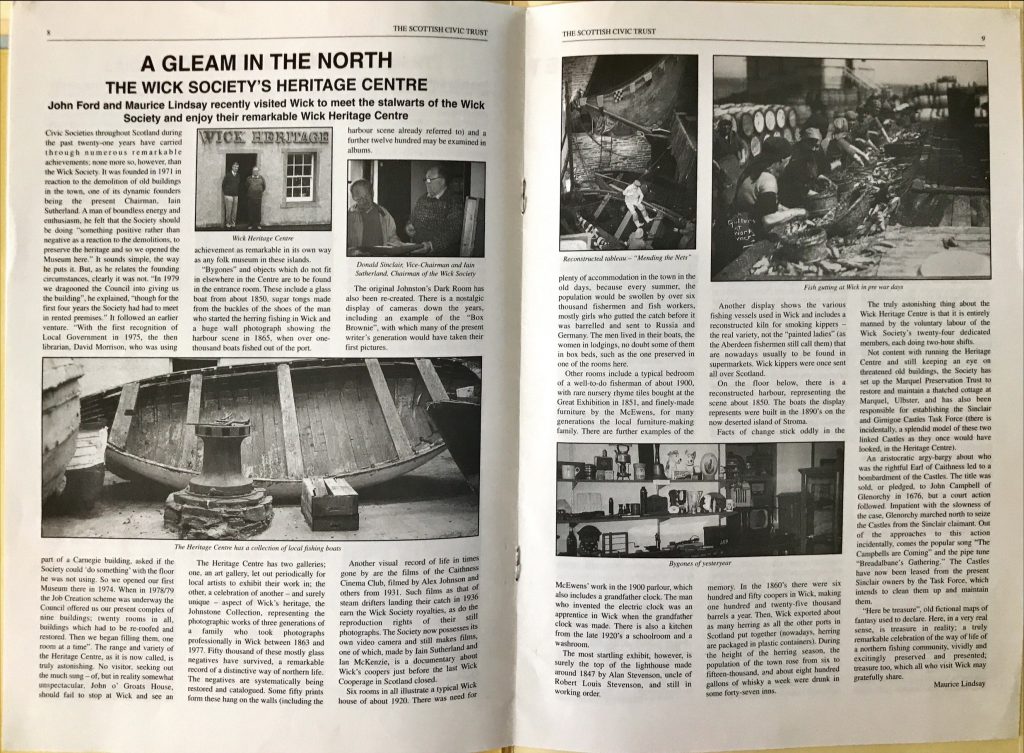
Article on Wick Heritage Museum in the Scottish Civic Trust Newsletter No. 14 Autumn 1997 (SUTH/8/1/5)
Iain’s passion was strongly displayed through his role as Chairman of the Wick Society and the work and legacy that was established through the organisation, which continues to grow today. Iain led a group of like minded individuals to form the society in 1971. He was also a driving force in acquiring premises at Bank Row where Wick Heritage Museum has been located since 1980.
Amongst his papers is a discussion document for the members of the society, c.1990, looking at Tourism in Caithness and the part that the society can play in any future that it may have. Iain’s passion for his home county is laid bare here. He explains the inadequacy of the current tourism infrastructure in Caithness and talks of the potential that the county could take advantage of.
The continuing popularity and reputation of the Wick Society and Heritage Museum, as well as many broader successes within the Caithness heritage community, speak volumes of Iain’s influence. He evidently made an enduring mark, advancing civic and community responsibility as well as the self-promotion and care of the counties past.
Local historian is perhaps an inadequate descriptor for someone who is not only researching and writing local history but also actively engaging in and promoting the infrastructure of the county for locals and visitors alike. Iain’s work and restless spirit really shine through here and he says it best when stating:
‘if we start modestly and work our way from one modest objective successfully to another a little more ambitious we may show the way by example’
Below are reproduced the introduction and conclusion from this inspiring paper.
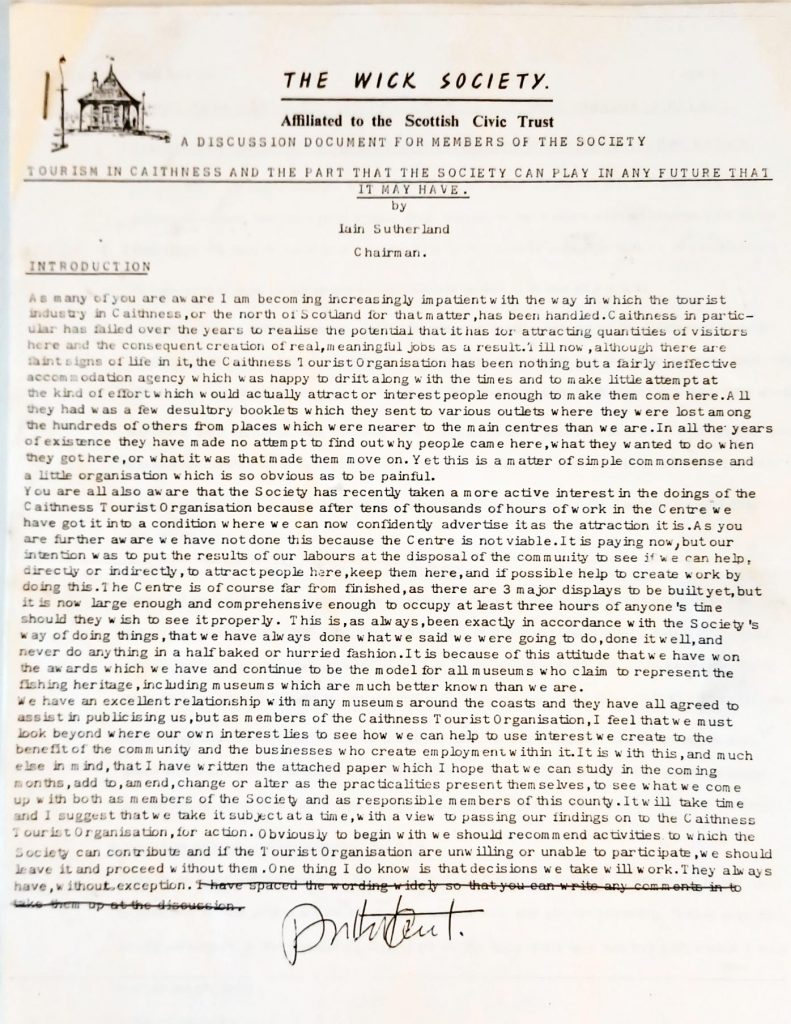
Tourism in Caithness and the part that the society can play in any future that it may have, Introduction (SUTH/2/6/8)
‘I feel that we must look beyond where our own interest lies to see how we can help to use interest we create to the benefit of the community and the businesses who create employment within it’
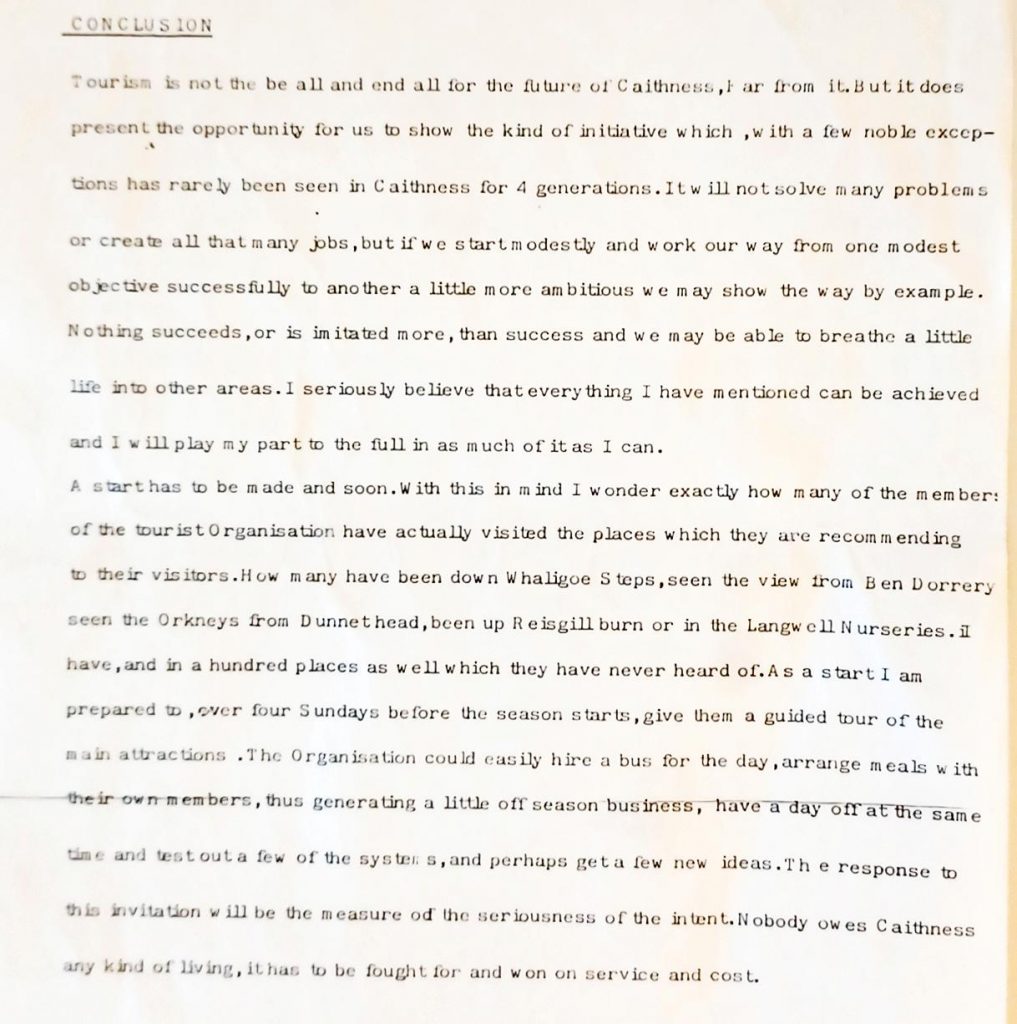
Tourism in Caithness and the part that the society can play in any future that it may have, Conclusion (SUTH/2/6/8)
‘I seriously believe that everything I have mentioned can be achieved and I will play my part to the full in as much of it as I can… Nobody owes Caithness any kind of living, it has to be fought for and won on service and cost’
We also hold this wonderful interview with Iain speaking passionately about the society, Halloween traditions in Caithness and his research and writing.
Iain Sutherland Interview – The Wick Society – SUTH/5/7
Cartography
As well as filling many of the gaps in the historical record of Caithness through his writing, Iain was also passionate about cartography, the making of maps. His collection showcases many wonderful hand drawn examples that afford fantastic new perspectives of the county landscape. Below are seven maps drawn by Iain of areas throughout Caithness and Sutherland. There are captions provided with each.
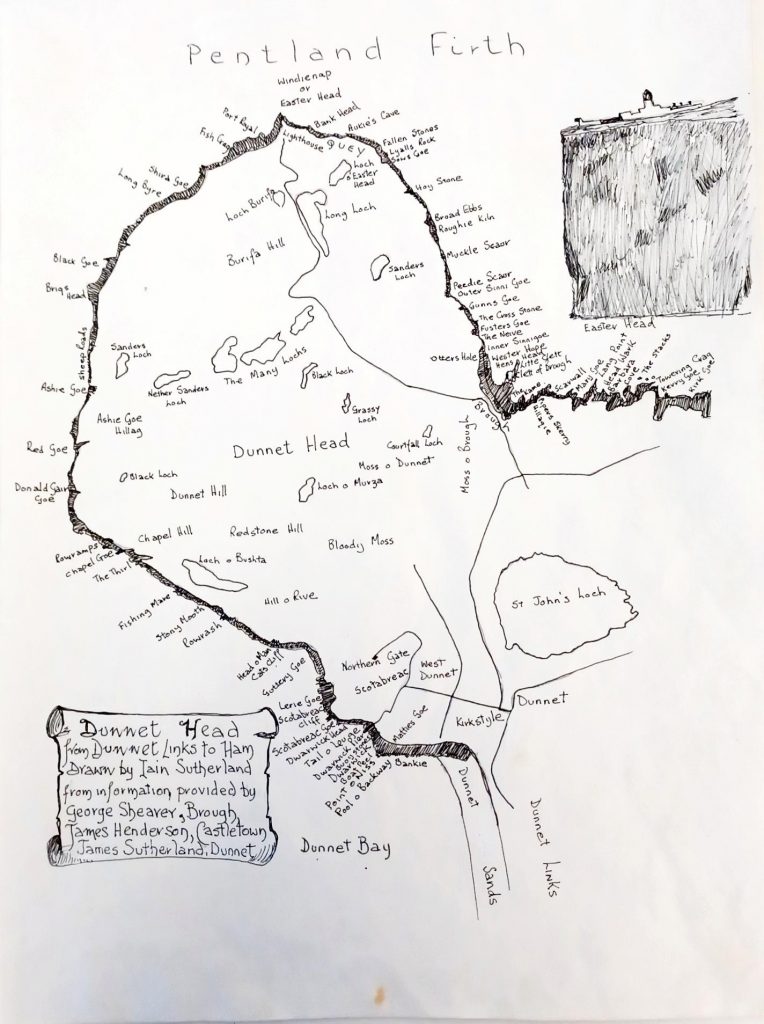
Map entitled ‘Dunnet Head from Dunnet Links to Ham’ drawn by Iain Sutherland from information provided by George Shearer, Brough, James Henderson, Castletown and James Sutherland, Dunnet’, many of the landmarks are labelled along the coast (SUTH/3/11)
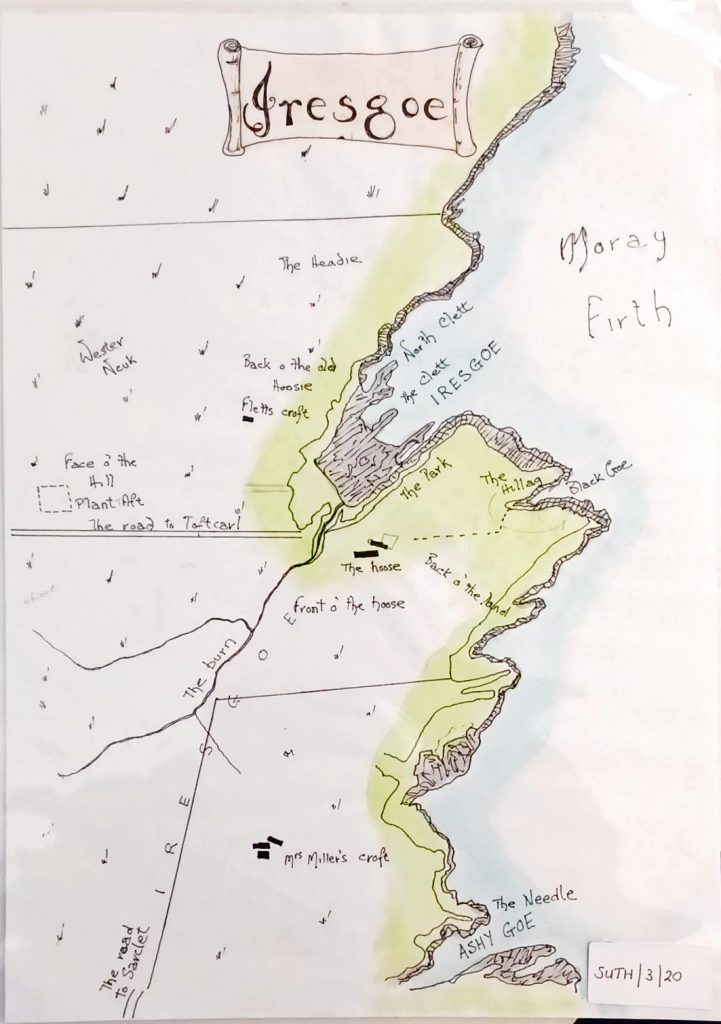
Hand drawn coloured map of Iresgoe which is near Yarrows and Thrumster in the parish of Wick (SUTH/3/20)
Advocacy and inspiration
Spreading the word
There is plenty of evidence throughout the collection of Iain’s travels across Scotland to give lectures and deliver classes, all the while advocating for the county and spreading word of the wonderful histories and stories he had researched. Correspondence reveals Iain travelled across the country delivering courses and lectures about the history of Caithness and it’s notable figures, whilst also performing readings of traditional songs and working with students.
The many letters include reference to the Institution of Electrical Engineers, Scotland North and their Perth and Aberdeen events in 1994. Iain delivered a lecture entitled Alexander Bain, The Forgotten Pioneer.
Iain was also involved in delivering local studies courses on Fishing in Caithness and Fishing in Orkney throughout 1994 and 1995. These were delivered by tape to students at the University of Aberdeen.
Iain was a guest speaker at the Crofters Commission Regional Assessors Seminar in Inverness on the 24th Feb 1994.
The Orkney Science Festival welcomed Iain to speak over many decades. In 1993 and 1994 he spoke on Caithness history, specifically herring fishing, as well as Alexander Bain and lighthouse machinery. The letter below explains that Iain was ‘one of a handful of men still living who have actually assembled the machinery of a mechanical lighthouse’. Also included below are digitised slides from Iain’s collection showing photographs and lecture slides concerning lighthouses and their operation.
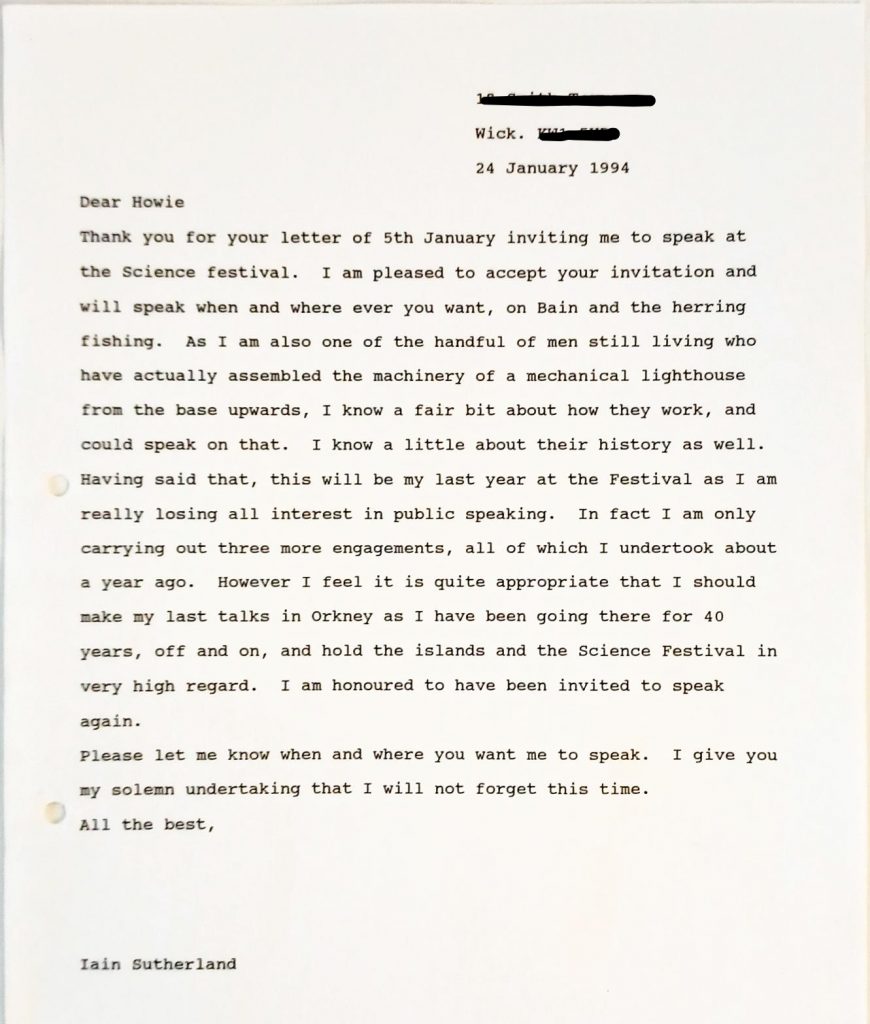
Letter written by Iain Sutherland accepting an invitation to speak at the Orkney Science Festival(SUTH/7/15)
Finally, and quite differently, Iain was asked to perform a reading of Barley Bree for the Traverse Theatre in Edinburgh.
Local preservation
Iain’s hands on approach to the preservation of Caithness heritage is perhaps no better displayed than through his work at the Whaligoe Steps and its unique harbour. Iain wrote:
‘I had always been attracted to the Steps and the Haven as I used to visit my granduncle and aunt with my brothers from early childhood to see them and hear the stories of the past’[1].
In the early 70s, it became clear that the preservation of the steps leading down to the harbour had been abandoned and so Iain and some friends began work to save what he described as a ‘treasure chest’ for both wildlife and heritage.
Unbeknownst to them at first, a local women, Etta Juhle, had also been doing the same thing and they thenceforth worked together to repair damages the steps suffered from landslides. A plaque in Etta’s honour was erected at the top of the steps by Iain and his friends in 2002.
The Shell Better Britain Campaign has awarded those involved in the steps maintenance on multiple occasions. The full story of the harbour and its preservation can be read in Whaligoe and Its Steps: A Unique Harbour. Below is reproduced one of Iain’s original sketches of Whaligoe Harbour.
Lastly, here is a picture of Iain and others painting the beloved Trinkie in Wick, another sign of his never ceasing mission to better the county for everyone.
Inspiration
Iain was a great inspiration to many locally and nationwide. There is overwhelming evidence of this throughout his collection. We’d like to share a few select examples of the impact his work and advocacy had and the undying hospitality and insight he was always ready to share. Reproduced below is a recording of different individuals speaking of Iain’s influence and character.
Various people talking of Iain’s influence and inspiration – SUTH/5/7
Iain also received many thank you cards including this one.
‘It’s great what you an others have done to preserve a piece of history [Whaligoe Steps] and I hope that others will continue to preserve history as you have’
Iain was an inspiration to other researchers and historians and the letter below makes clear the impact his writing and hospitality could have.
‘I much enjoyed meeting you and appreciated the warmth of your hospitality… I was delighted to hear that your book on farming and crofting etc. in Caithness is going well and I shall look forward to buying a copy when it is published. It is obviously a labour of love and I am certain it will be a great joy to read’
Finally, Nucleus posted on Facebook about Iain and his collection last year. The comments received in response were wonderful and show the deep appreciation people feel for Iain.
‘A legend remember when he worked at Dounreay.’
‘Brilliant man could spend hours listening to him. Fondly remembered.’
‘I was in the same class in Wick High School and he was a very bright boy. After school he used to help his grandfather store drifters at the harbour as he managed the ship handlers there.’
‘The county would be much poorer if it wasn’t for the likes of Iain and many others who recorded our history. Always enjoyed chatting to him and discussing local history.’
‘An absolute legend of a man… The much loved and much missed Iain (Tuddie) Sutherland. Gentleman.’
‘ I remember Iain fondly, and the many conversations we had together, either in my study at Kirkhill House, at the Wick Heritage Museum or, often as not at the old Fish Mart or the Pilot House at the Braehead. Iain truly was a legend in his ain lifetime, and he is sorely missed.’
Photographs and 35mm slides
To end we have collated an assortment of digitised photographs and 35mm slides from Iain’s collection. There are hundreds, if not thousands, of individual slides held at Nucleus. Presented here is just a glimmer of their richness and importance.
Afterword
Iain’s work, dedication and community loyalty has made his name synonymous with the history of Caithness. The above selection of archives from his collection only begins to show the impact he had and the countless people he educated, brought together and inspired.
Iain in many ways has become one of the Caithness notables, like Alexander Bain, the man he spent so many years researching and promoting. Although perhaps known as a local historian Iain was clearly so much more and it is a privilege to hold his papers, and the story behind them, at Nucleus. In this way generations to come may also know of his work and spirit.
We understand that many of our readers will remember Iain fondly and would, again, like to encourage anyone who would like to share their memories to email:
Alternatively you can post on our Facebook page here.
These memories can then be kept to compliment Iain’s precious collection.
Read more Stories From The Archive
References
[1] Iain Sutherland, Whaligoe and Its Steps: A Unique Harbour (2007), p. 14.
